

February/March 2023 Hidden Figures The impact helpers have on us 2023 Interior Trends What's on trend this year Throw, Scream, Eat Get the lowdown on lo hei Festival Fever Festivals you should plan to visit






We're currently in one of my favorite times of the year. No, not all of the rain we've had! It's the Lunar New Year period that I love. I can't get enough lion dances and yu sheng and all of the beautiful red decorations! Being able to partake in the traditions of a culture I didn't grow up with is one of the best parts of living in Asia.
In this issue, we celebrate the multitude of festivals that take place in Singapore and around Southeast Asia. We are so lucky to live in a region with so many different cultures and religions, where it seems like there's something to celebrate nearly every week.
Coming up in Singapore, we've got Thaipusam and Chingay – both unique celebrations you're unlikely to see outside of SEA. There are several other unique holidays and festivals that are highlighted in the article, "Festival Fever."
On the cover of this issue, the image comes from a Holi festival in India. This colorful Hindu celebration takes place in March as a way to welcome the spring, to release inhibitions and start fresh. On the first day of the festival, a bonfire is lit to symbolically burn away all the bad and give way to a colorful and vibrant new future. I have a feeling that if I ever make it to a Holi festival, it will probably rank right up there with Lunar New Year
We hope you're inspired to visit some of the festivals we've highlighted here!
EDITORIAL
who we are
Editor-in-Chief: Susan Williams communications@aasingapore.com
Publishing Editor: Melinda Murphy generalmanager@aasingapore.com
LAYOUT

Graphic Designer: Susan Williams graphics@aasingapore.com
ADVERTISING
Advertising Manager: Thila Chandra thila@aasingapore.com
COLUMNIST
Andrea McKenna Brankin
CONTRIBUTORS
Asha, Faith Chanda, Kevin F. Cox, Sue Harben, Richard Hartung, Lindy Hiemstra, Jaiden Mehta, Melinda Murphy, Aisling O'Brien, Lily Ong, Marc Servos, Eric Walter, Tyler Wisler
AMERICAN ASSOCIATION BOARD MEMBERS
President: Blair Hall
Vice President: Michael Johnsen
Treasurer: Ashok Lalwani
Directors-at-Large: Mkulima Britt, Dana Hvide, Aaron Kim, Daniel Moss, Naureen Rasul, Jennifer Yarbrough
AmCham: Dr. Hsien-Hsien Lei
AWA: Linda Schindler
SACAC: Jeff Majestic
SAS: Kyle Aldous
The American Club: Neetu Mirchandani
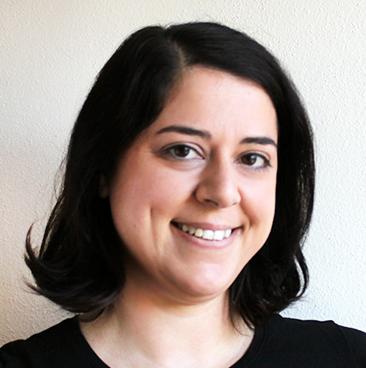
Non-Voting Members
US Embassy: Missy Downing
US Navy COMLOG WESTPAC: Rear Admiral Mark Melson
AAS: Melinda Murphy
PUBLISHER – AMERICAN ASSOCIATION
The American Association of Singapore (AAS) is a professional, notfor-profit organization established to enhance the well-being and living experience of Americans residing in Singapore and to promote relationships, both business and social, between Americans and those from different cultures and nationalities.
56A Boat Quay, Singapore 049845 • (+65) 8030 6183 admin@aasingapore.com • www.aasingapore.com
Living In Singapore magazine will be released six times per year, with the purpose of enhancing the expatriate experience in Singapore.
SUBSCRIPTION
A subscription to Living in Singapore is complementary with an AAS or CareerSource membership. AAS annual family membership is $120.
To join, visit www.aasingapore.com and have Living in Singapore magazine delivered to your inbox. Reproduction in any manner, in English or any other language, is prohibited without written permission. Living in Singapore welcomes all contributions of volunteer time or written material.
FOLLOW US!
Susan Williams
Community News
Festival Fever
The joy of festivals, and some to check out in SEA.


42 Throw, Scream, Eat
What's up with the lo hei?


History of Chijmes

Learn about the history of this iconic location.
Hidden Figures
The impact migrant domestic workers have on our
62 2023 Interior Trends
What can we look forward to in interiors this year?

28 42 60 56 62
what’s in...
message from the president
By Blair Hall
And we’re off! Having barely recovered from the Christmas holiday, we bunny-hopped right into Chinese New Year and are already thinking about our plans for the spring holidays. How do we even have time for work and school when there’s so much vacationing to be done? Whether you took advantage of this holiday time to travel abroad or to relax in Singapore, I hope you’re rested and ready for a bright and active 2023!
After thanking Santa for stopping by the December Toys for Tots event, which brought cheer to young community members, we collected hundreds of gifts that the US Marines delivered to underprivileged kids across Singapore, our energetic AAS team could catch its breath during the holiday break. But they’re already working full-out on our packed spring and summer calendar of exciting offerings.
The 87th George Washington Ball, our premier black-tie charity gala, kicks off the season in February with a “Hollywood Glamour” theme. This star-studded, red-carpet occasion promises a captivating night of charm, allure, and generosity. Our charity beneficiary this year is Kidz Horizon Appeal which, for nearly 20 years, has helped support needy Singapore children suffering from chronic illness. We are excited to see you there looking so glamorous!
Our popular Ambassador’s Cup Golf Tournament is set for March 11 at the fabulous Els Desaru Course in Johor Bahru. With accommodations at the Hard Rock Hotel Desaru and plenty of recreational options, golfers are not the only family members who will enjoy this outing! Tickets are going fast, so get your foursome and sign up soon. Are you a softball player? Sign up with the AAS team for league play on Sunday afternoons from February to May. Please check the events calendar to find other appealing sporting, community service, volunteer opportunities, networking events, and cultural explorations.
We’d love to hear from you. The Association is getting its groove back following the inactivity and impecunity of the pandemic. We’re gearing up to provide what our members want now. Please join us to help set the Association’s direction at our Annual General Meeting on March 28, again hosted by our partner, Lawry’s The Prime Rib. The first 30 registrants will receive a prime rib dinner courtesy of Lawry’s.
We’re glad to bring you this issue of Living in Singapore magazine, focusing on festivals around the region. I hope it gives you good ideas for exploring Singapore and Southeast Asia. It also offers articles on mental health, the meaning of Hanukah, and other insightful pieces. Enjoy. And look out for the 16th edition of our award-winning Living in Singapore Reference Guide, the essential reference source popular with new arrivals and old hands on everything you need to know to master life on the Little Red Dot.
Looking at our exciting calendar of upcoming events, I hope you’ll join us for some fun, connection, and celebration this Spring. See you at the events or on the street!
American Community Organizations Directory

AAS aasingapore.com


AmCham amcham.com.sg



American Dragons americandragons.sg

Scouts

BSA Troop 07: www.bsatroop07.org
BSA Troop 10: www.sgtroop10.org
AWA awasingapore.org

Navy League nlus-sgp.org

SACAC Sports safl.sacac.com

BSA Troop 1010: sgtroop1010@gmail.com

SAS sas.edu.sg
SAIS sais.edu.sg
The American Club amclub.org.sg
US Embassy sg.usembassy.gov
Cub Scouts Pack 3010: www.sgpack3010.org
Cub Scouts Pack 3017: cubscoutsusa.com.sg
USA Girl Scouts: www.singaporeusagirlscouts.org

6 LIVING IN SINGAPORE
member benefits
Core Holistic Nutrition

Get 10% off the initial consultation rate. WhatsApp: +65 8789 9064. contact@coreholisticnutrition.com. Valid through 2/28/23.
Estheclinic

10% discount for all their treatments. Valid through 12/30/23.
Expat Living magazine

Free six-month subscription. Valid through 12/30/23.
Hard Rock Cafe

15% discount on food and beverage upon showing a screenshot of your membership. Valid through 12/30/23.
Hedgers Carpet

Free high-quality underlayment with every purchase at our store (while stocks last). Valid through 12/30/23.
Lawry’s The Prime Rib

15% discount for à la carte food bill for dine-in only. Blackout dates apply. Valid through 12/30/23.

Mr. Jeff

Free pick up & delivery for Buona Vista/Pasir Panjang area; 20% discount using code AAS20. Valid through 6/30/23.
Marriott

AAS members enjoy a 25% discount on F&B. Show a screenshot of your membership.
Maharaja's
AAS Members enjoy 15% discount off tailor-made clothes (Men & Women) at their two outlets. Valid through 6/30/23.

Motorist

15% off car insurance quotes. Valid through 2/28/23.
New World's End

AAS members enjoy a 10% discount with unique gift code AAS10. Valid through 3/31/23.
Poke Theory
AAS members get a 10% discount. Flash your membership profile to the friendly staff to redeem this perk! Exclusively at Katong Square #01-12. Valid through 12/30/23.
Raffles Hotel
20% discount at Raffles Spa Mon-Thu; 15% off regular-priced items at Raffles Boutique & Floral Boutique; 15% off total bill at Raffles restaurants. Blackout dates apply. Valid through 12/22/23.

The Counselling Place

AAS members enjoy 10% discount for their first session. Apply code "AAS" in the coupon section when making the booking to receive the discount. Valid through 12/30/23.
The Residence Bintan

AAS members get 15% off Best Available Rate, 10% off Recreational Activities, 10% off Spa Treatments. Valid through 6/30/23.
Solescape

AAS members enjoy 15% discount on initial consultation at Family Podiatry Centre and 10% discount on their purchase of a pair of shoes. Valid through 12/31/23.
Scan or click here for our full member benefits page and more details on each benefit.
LIVING IN SINGAPORE 7
American Association Sister Organizations

Click Through to Find Out What’s Planned at AAS and at Our Sister Orgs
American Association of Singapore


AmCham
The 87th George Washington Ball
Feb 4, 6:30 – 12:00 AM
Team AAS Softball
Sundays, Feb-May
(Young) Professionals & Newbies Happy Hour
Feb 9, 6:30 – 8:30 PM
American Women’s Association
Navy League
upcoming events
Metworks
Feb 16, 7:00 – 9:00 PM
AAS Monthly Happy Hour
Feb 17, 6:00 – 8:00 PM
XCL American Academy

Ambassador's Cup Golf Tournament
Mar 11, 1:00 – 10:00 PM
AAS Strategic Partners
SAFL
The American Club
US Embassy
AAS Annual General Meeting
Mar 28, 6:00 PM
The AAS Easter Extravaganza
Apr 2, 9:30 AM
We would like to extend our thanks to our strategic partners at the Association for their continued support and contribution.



Patriot Partners
Stars & Stripes Partners
Community Partner
8 LIVING IN SINGAPORE
A one of a kind street-immersive audio story take a night walk through back alleys and hidden fantasy rooms, into the underbelly of Singapore.


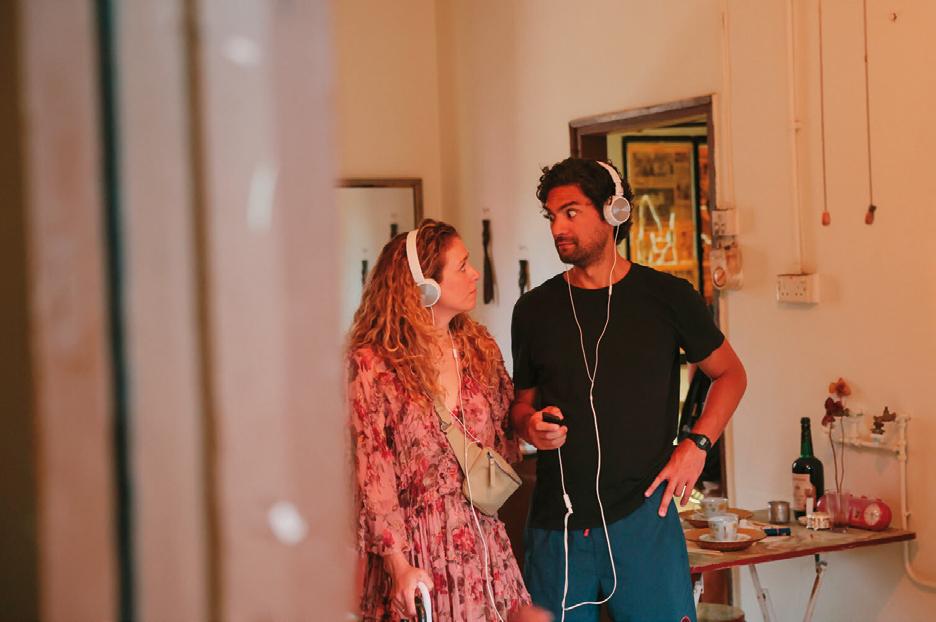
Wednesdays, Fridays, Saturdays, Sundays
USE THE CODE "AAS10" FOR 10% OFF ALL TICKETS!
USUAL PRICE $35, OFFER VALID TILL 31 MAR 2023 BOOK NOW AT OHSTORIES.SG

All
AITFCC helps individuals and couples address difficult relationship and life issues.
We specialize in difficult cases related to anxiety, depression, infidelity, anger and life transition.

We provide sleep help through product Babysleepfairy. We have a portal, www.mynewbeginningsclub.com, and a wide range of hours. Contact us now.
Tammy M. Fontana, MS (USA) NCC CTRT, clinical Sex Therapist (USA)
www.allinthefamilycounselling.com
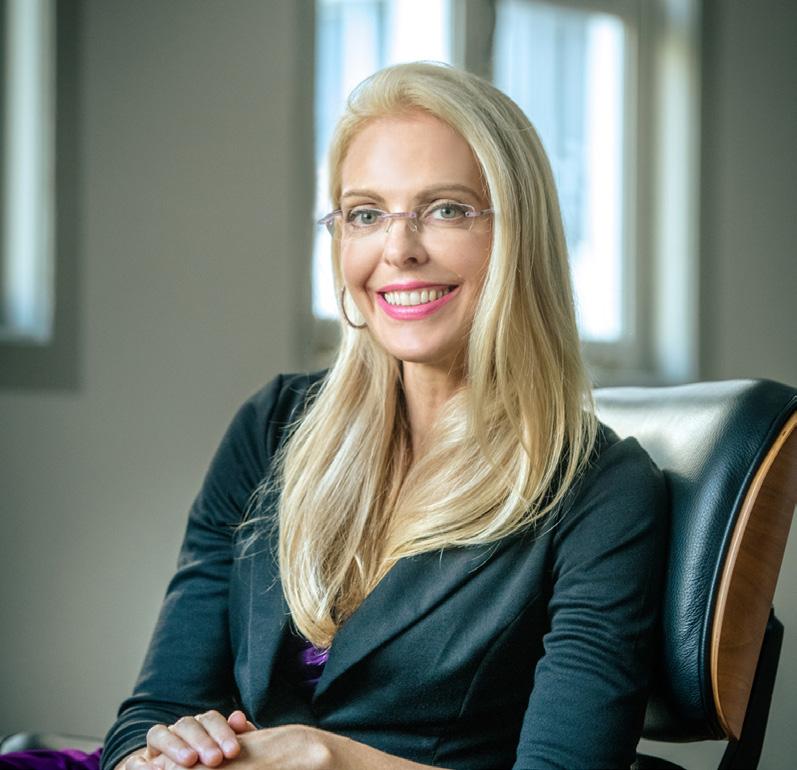
7239 WhatsApp
tammy@allinthefamilycounselling.com +65 9030
preferred
in the
Counselling Centre Pte Ltd AITFCC Ad.indd 1 7/21/22 2:59 PM
Family
7.30pm
Showtimes: 5.30pm | 6pm | 6.30pm | 7pm |
| 8pm | 8.30pm | 9pm
On December 5, AAS and The American Club co-hosted our annual Toys For Tots event, and we had a blast! We had crafts for the kids, including gingerbread decorating, and snacks courtesy of The American Club. Ambassador Jonathan Kaplan stopped by to talk to all who attended. Our Deputy Chief of Mission Casey Mace was also there with his family. Then Santa himself showed up to take photos with the kids. Singapore American School choir wowed us



with their talent as they sang Christmas songs. Thanks to those who attended, and many, many who didn't attend but donated toys. We collected hundreds upon hundreds of gifts to donate to The Children's Wishing Well, which brightened the holidays for so many children. Thank you to all who contributed!

For additional photos, click here
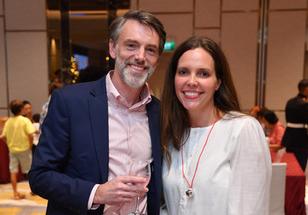







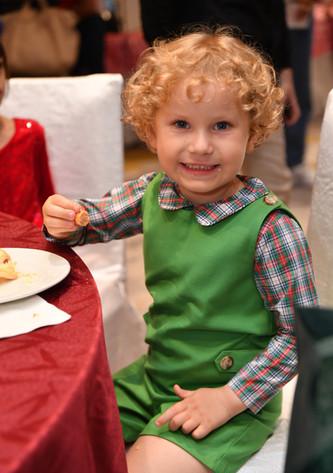








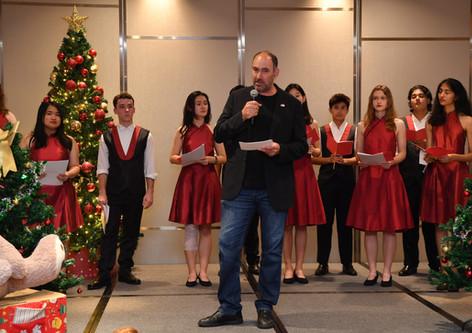
Holiday Lights Tour

What fun we all had checking out the dazzling Christmas spectacle across Singapore. The open-top bus was the perfect way to check out the lights in Gardens by the Bay, as well as Orchard, decked out in twinkling lights, bright installations, and festive décor for the ultimate holiday extravaganza. We sipped wine provided by Cellarbrations along the way. Then we headed to Cellarbrations on the East Coast for more wine and snacks. What a fun evening!
Check out additional photos here.






Leadership in Scouting


























 By Jaiden Mehta, BSA Troop 10
By Jaiden Mehta, BSA Troop 10








When crossing over from Cub Scouts to BSA Scouts, many things changed, including taking on a leadership role. There is more to BSA Scouts than getting badges, camping, and making fires; it is about leadership. As a Scout moves up in the ranks, they must fulfill different leadership roles for the troop. My first role in Scouts was Historian. My responsibilities included taking photos and documenting all the activities for our website. Being new to the troop, I didn’t fully understand my role, so I didn’t do much. Eventually, I became Patrol Leader, a role which let me be a leader to other Scouts. I guided my Scouts through activities such as first aid, camping, and cooking. My next role was Assistant Senior Patrol Leader, which meant I helped lead the whole troop. This was a great experience and taught me many new leadership skills I didn’t have before.
One of my favorite activities that I led for the troop was the mini Olympics day. I planned several workouts, including running, throwing, and calisthenics. It was really fun to see all my hard work pay off on the day of the event and see all the scouts enjoying it.
After having different leadership roles for the troop, I decided to support Cub Scout Pack 3010 as a Den Chief. In this role, I have helped the Cubs during meetings, Pinewood Derby, Raingutter Regatta, and during joint campouts. Having been a Cub Scout myself, I know what it takes to make these events successful, so I was happy to help from the troop level. Being a Den Chief for the last two years has allowed me to know several of the Dens, especially my younger brother’s Den. Seeing them advance and learn basic skills with help from their Den Chief

is excellent. Being Den Chief is one of the best leadership roles in Scouting as it lets the older Scouts teach the next generation of BSA Scouts.


My Experience as a Brownie



































 By Asha, Troop 75
By Asha, Troop 75


My experience so far has been amazing!


I have learned so much from my Troop Leaders and friends.
My favorite activity so far has been the beekeeping field trip, because the instructor was very funny, and he made me fearless of bees.
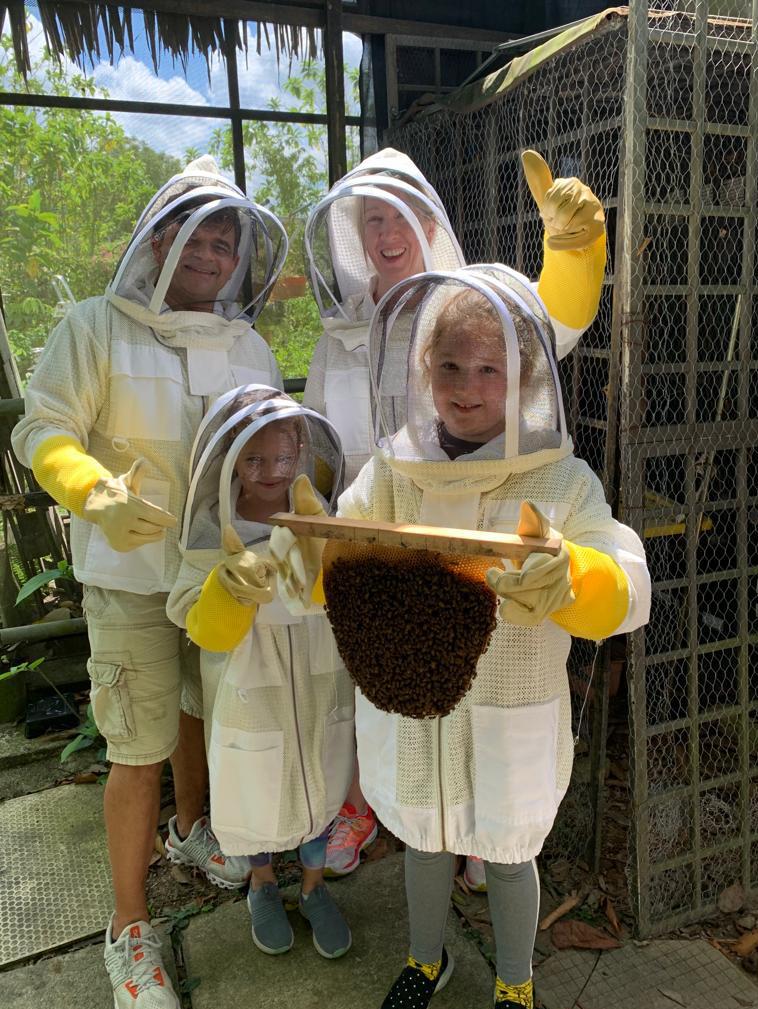
I also really enjoyed the Christmas party my troop had because there were lots of games and crafts.

I am looking forward to the camp and all the other activities that are planned for us in the future.


I have really enjoyed Brownies so far, and I am looking forward to everything else that I will be doing with my troop leaders and my friends!






Though I was born and raised in Indiana, my parents are from Ethiopia and immigrated to the US in the late 80s. Alongside my grandmother, they raised my older siblings and me working long hours and overtime to provide for us. My parents wanted us to live the American Dream and, through their hard work, gave us the greatest life that we could have had.

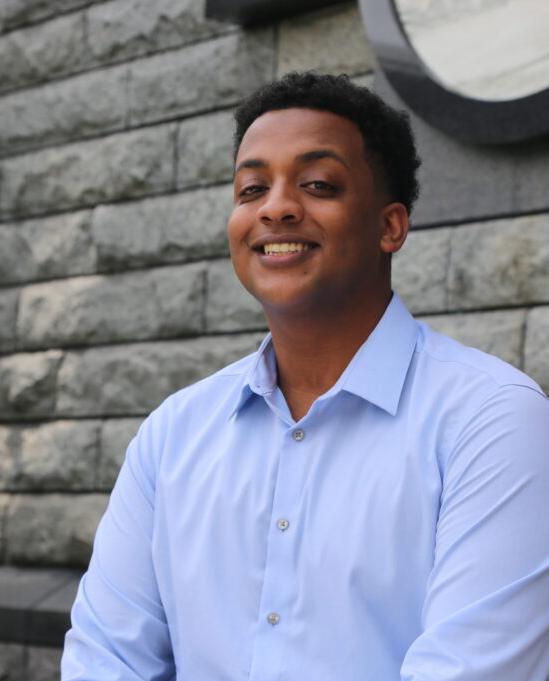
My family has significantly impacted me and influenced who I am today. My brother, David, is six years older than me, and my sister Edna is seven years older. Both led me to be who I am, in a way, because of the big age gap. Being the youngest, they were somewhat like “in-between parents” when my parents weren’t around. My sister gave me my work ethic, and my brother gave me the idea of “just be yourself.”
I am a first-generation college student and the first person in my family to get a master’s degree. I did my undergraduate and postgraduate programs at IU Bloomington, finishing my master’s degree in information systems. There, I found the FAIT Fellowship, the Foreign Affairs Information Technology program, which led me to the Foreign Service.
Working for the Foreign Service, I feel like I am making a positive impact while being able to travel to different places and meet new people. At the embassy, I’m helping people troubleshoot their hardware and software problems and developing programs to make tools easier in the office. Until I came here, I didn’t know how significant my impact would be. But I genuinely feel it, and I
16 LIVING IN SINGAPORE living in singapore
Humans of The Embassy
Isaiah Makonnen FAIT Fellowship
truly appreciate it. I see people helping others out. And I have the opportunity to make things better within the embassy. I don’t think I would have that same impact if I worked at a big firm or a start-up back home. I feel like I’m making my footprint.

My parents are retired in Fort Wayne, IN, and my siblings live and work in the US. I miss them, but they’re supporting me and telling me, "This is for you.” It’s fantastic when you have a great support system.

I’ve always had a close relationship with my family and siblings. I always wanted to do whatever my brother was doing and be like him and my sister. For example, I love basketball. It’s my favorite sport: I love playing it and talking about it. I love everything about it. I think it grew on me because I saw my older brother watching it and playing it. Whatever my siblings were doing, I was trying to do it, too. My love for basketball stemmed from wanting to play it with him and wanting to beat him.
When we’re all together, we joke around and make fun of each other. My siblings doubleteam me, or I’m with my brother or sister to double-team the other sibling. And we have this little thing where no matter what we’re doing, we just kind of get on one another if we see something. That’s one of the things I think we rejoice in.
With my parents, movies connect us. I remember that everyone was in a funk after our grandma passed. I was the only one at the house during COVID, with online classes and everything going on. And I made it my mission to set up this movie theater. And I was like, “Hey, we have to have a movie night on this weekday,” and that gave them something to look forward to, so movies brought us together.
My parents, my sister, and my brother are my motivation. They really inspire me to be my best every day. But they also inspire me to do what I want to do. They’re so fulfilled that they say, “You know what? We’re so proud of you. And whatever you decide to do, if you don’t decide to do this or this, we support you.” That’s what I take away from them. And I’m so happy that I’ve had that my whole life.
LIVING IN SINGAPORE 17
singapore

PioneerTown - Experiential Learning Program Like No Other in Singapore
At XCL American Academy, hands-on, real-world learning is an essential part of our curriculum. Starting in elementary school, our students participate in the PioneerTown program — a unique experiential, large-scale simulation of a town, where young learners can engage in role-playing and take on different responsibilities in a self-contained economy, learning essential concepts such as economics, business, negotiation, innovation, leadership, sales, commerce, and many others.
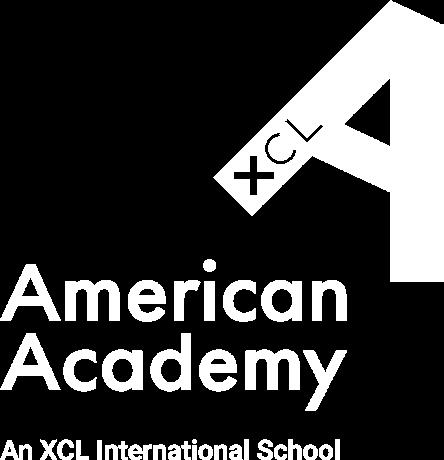
With the support of best-in-class educators and industry experts, students work in teams on different entrepreneurial projects throughout the school year to learn about market research, financial literacy, legal systems, social impact, product design, business development, fundraising, and other aspects of starting and running a business. They also learn the fundamentals of small-town governance.
The PioneerTown curriculum includes lessons in six themes (basic economics, banking, money management, communications, philanthropy, adulting) mapped to Jump$tart Coalition for Personal Financial Literacy and the Common Core Standards. The hands-on and fun activities are carefully planned to teach basic economics and reinforce cultural awareness, geography, math, science, language arts, and civics. It’s an unforgettable experience that fosters lifelong learning.
What Does Pioneer Town Look Like?
This year, the inaugural Pioneer Town has been designed as the American frontier-style town square. To introduce our young learners to entrepreneurship, we offer them the opportunity to run a shop, where they take charge of every facet of the business, learn about stock ordering, inventory, cost management, marketing, and advertising, and decide how to spend the profit. This unique opportunity empowers our students with 21st-century skills and provides them with the experiences they need to become pioneers of tomorrow and succeed in an ever-changing world.
PioneerTown Transformation
We are excited and look forward to opening our new, purpose-built campus facilities in August 2023, featuring a three-story library (our ‘Pioneer Zone’), a multi-purpose gym, specialist classes equipped with the latest educational technology with a specially designed PioneerTown area.
This authentic and conceptual PioneerTown environment within the physical premises of the school will allow students to take on various real-life roles and responsibilities and help them learn about collaborative civic involvement, the development of laws, the establishment of human rights, collaboration, innovation, enterprise, and more. PioneerTown is a 21st-century educational program designed to nurture the new generation of pioneers helping them to develop essential life skills in a fun and hands-on way.
If you are interested to learn more about XAA’s Pioneer Town program and how it can open your child to a world of possibilities, contact our Admissions Team today at admissions@xaa.edu.sg or (65) 6230 4222.

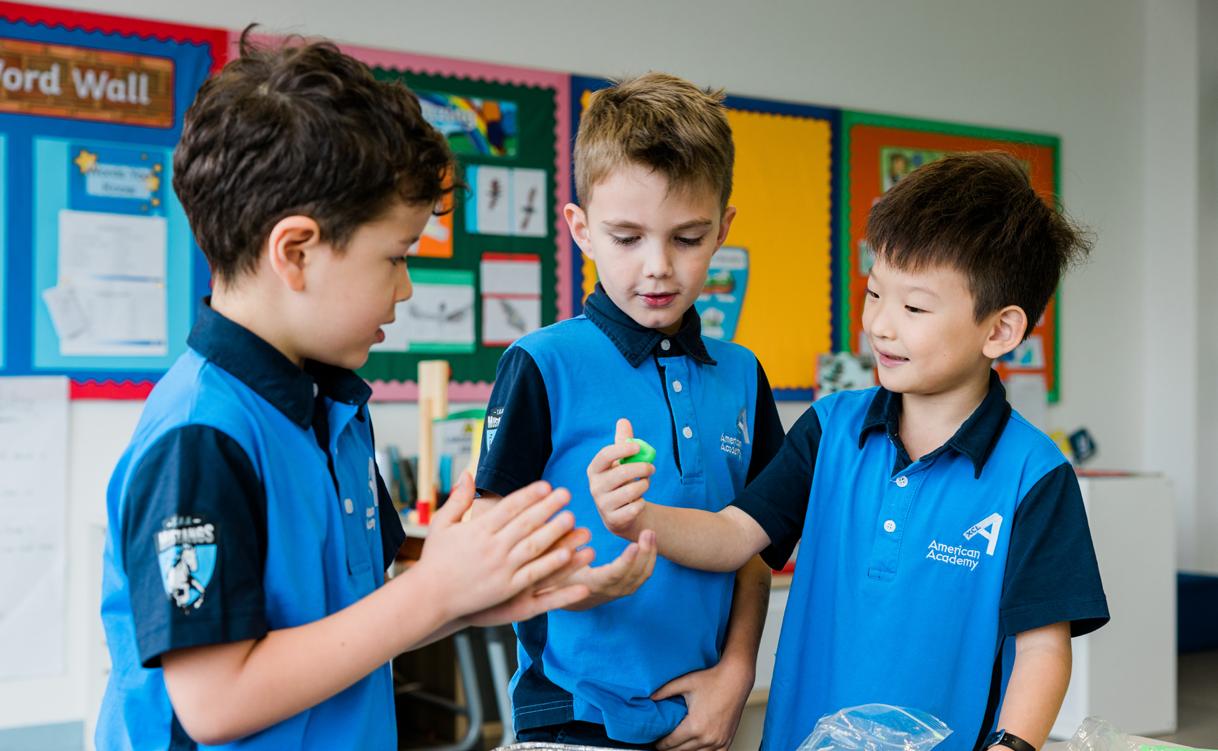

LIVING IN SINGAPORE 19
ADVERTORIAL
A Legacy of Independence: Singapore American School
 By Aisling O’Brien, Director of Development, Singapore American School
By Aisling O’Brien, Director of Development, Singapore American School
At Singapore American School (SAS), we are proud to have been providing exceptional education to students and families in Singapore since 1956. Our non-profit status and independence are things we treasure, and they set us apart from other American schools on the island.

20 LIVING IN SINGAPORE
Our Vision: Providing the Best American Education for Our Students
At SAS, we're passionate about knowledge and committed to helping students succeed. Due to our status as an independent American school, we are not influenced by any outside pressure or interest. We invest all tuition and philanthropic support directly into our students' education—hiring the best educators, providing state-of-the-art facilities and technology, and offering a wide range of programs and extracurricular activities.
Celebrating Our Commitment to Excellence, Extraordinary Care, and Possibilities
Providing freedom for students to learn and grow allows us to focus on each student's individual needs while creating an inclusive and collaborative learning environment. Our students can succeed in a rapidly changing world by achieving their unique potential and becoming confident, open-minded learners.
At SAS, diversity is a strength, and we strive to create an inclusive and welcoming learning environment based on American values and principles.
“As both a SAS parent and the chair of the SAS Foundation Board, I believe our commitment to providing the best possible education to our students sets us apart from other American schools in Singapore. Our non-profit and independent status allows us to focus exclusively on each student's needs, providing them with the resources, opportunities, and support they need to succeed. This is the cornerstone of our mission, and I am proud to be a part of it."
"I am truly proud and honored to be an educator at SAS. We are a unique and diverse institution, offering a course of study tailored to meet every student's needs. Unlike other schools, we can truly personalize learning beyond our curriculum, allowing us to provide a comprehensive American education that prepares our students for success in a global society. SAS truly is a special place where every student can thrive and reach their full potential."
We are proud to be located in Singapore, a vibrant city known for its rich culture, global connectivity, and international perspective. We strive to foster strong connections between our students and the Singaporean community, which helps promote a greater understanding and appreciation of different cultures and worldviews.
"As a student at SAS, I am grateful to participate in a collaborative environment conducive to creativity. Our teachers focus on our growth as learners and, despite their busy schedules, make an effort to support every student. This fosters a healthy learning environment in which we feel empowered to reach our full potential. I am thankful for this opportunity to grow as a person and a student."
Discover the Advantages of an Independent American Education at SAS
At SAS, we offer our students a deeply innovative and unparalleled education as a non-profit and independent American school. If you are interested in learning more about the advantages of independent American education, we invite you to visit SAS—and experience the difference for yourself. Come see why SAS is the premier American school in Singapore and how we are dedicated to providing our students with the best possible education. We can't wait to welcome you to our community and show you all we offer.

Nurturing a Diverse and Inclusive Community
Ray Zage III, SAS parent and chair of the SAS Foundation Board (Singapore)
Anthony Poullard, high school deputy principal
Shannon, eleventh grade student
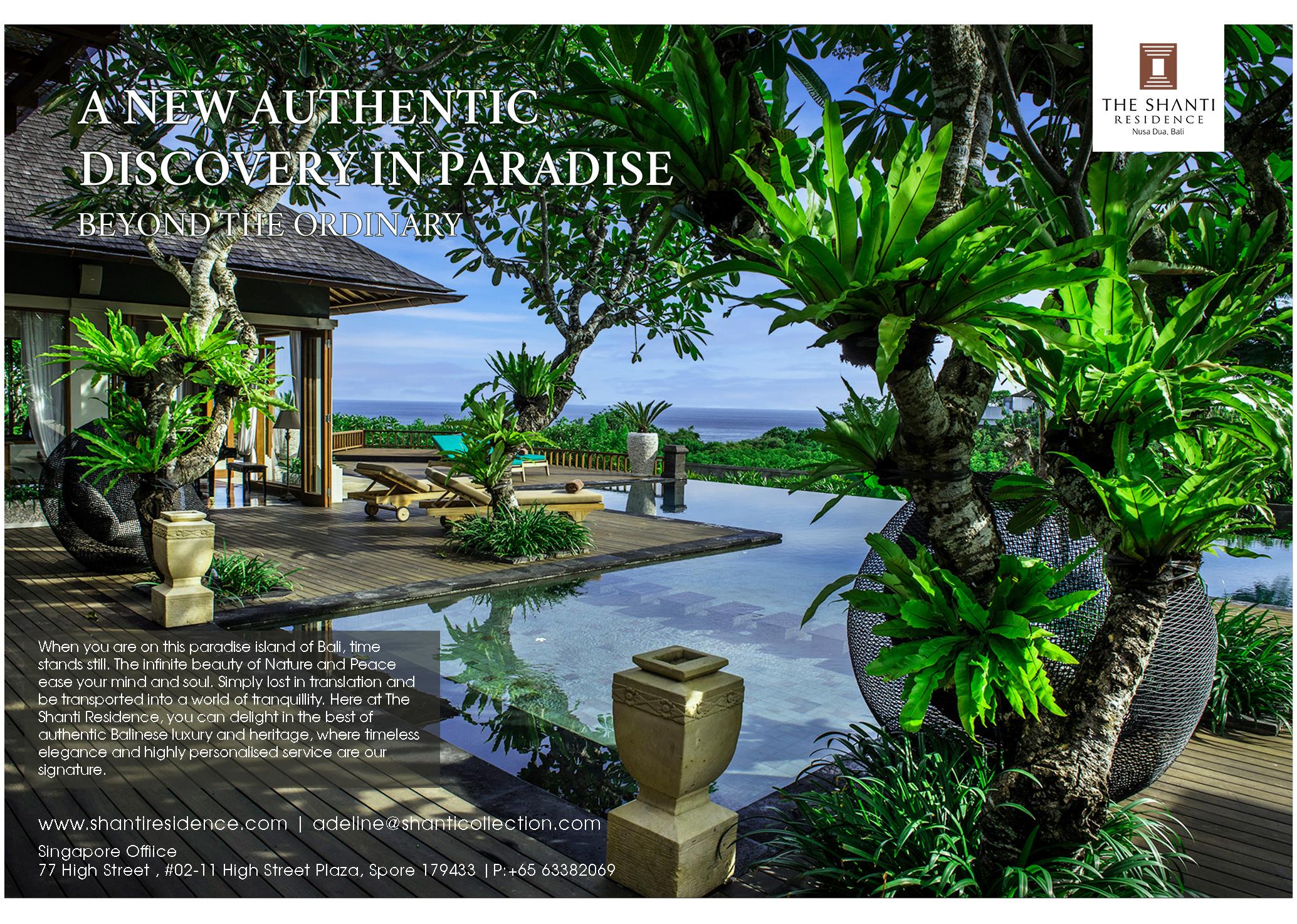


HEAD SPACE
Celebrate Everything!
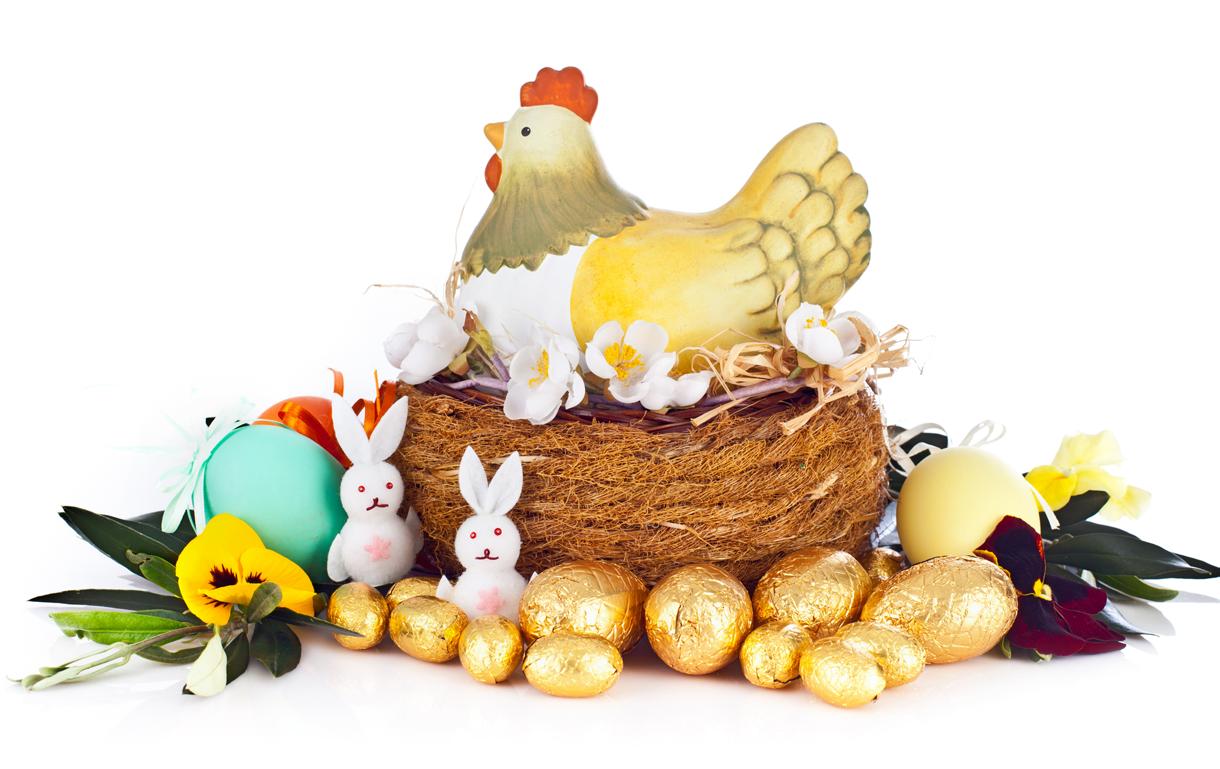
One of the cool things about living in Singapore as an American is that we can celebrate our holidays as well as those observed here. Singapore has a holiday or festival of some kind just about every month. We start the year with New Year’s Day, then Chinese New Year, move into Thaipusam, Valentine’s Day, and St. Patrick’s Day, on to Easter, May Day, Vesak Day, Ramadan and Hari Raya, Fourth of July, and then National Day. As we move into the fall, there’s the MidAutumn (or Mooncake) Festival, Halloween, and Deepavali, followed by American Thanksgiving, Hanukkah and Christmas, and then back to the auspicious Chinese New Year celebrations. Whew! What a year!
I know that mentally, some people are not up for celebrations. Depression, burnout, lack of time, and the like can put a damper on partaking in parties, decorations, or community events such as fireworks and parades. As a person with Bipolar Disorder, I know these feelings very well. But I learned a trick during the Covid lockdown in 2020: celebrate everything!
While we were cooped up in our condos, I checked the calendar for any upcoming celebration and hit Amazon, RedMart, and Lazada to trick out my place in any decorations I could find and stock up the fridge with celebratory foods. I even looked for clothes and t-shirts. I have several costume changes for St. Patrick’s Day, for example!

24 LIVING IN SINGAPORE
Welcome to the Head Space column, where we’ll discuss all matters related to mental health and how it relates to our lives here in Singapore. By Andrea McKenna Brankin.
I wasn’t able to get anything for American President’s Day, but I was able to rock out Valentine’s Day with a chocolate fountain and hearts; St. Patrick’s Day with corned beef from Molly Malone’s, shamrock lights, and tons of leprechaun dolls; and Easter with colored lights, flashy eggs, and bunnies. Fun fact: You can find
gnome dolls dressed in whichever holiday is on! One go-to was any hanging object like a lantern, and I got into the pillow covers with bunnies, shamrocks, or hearts.
Even after the lockdown, I continued to redo my place with décor to match the upcoming holiday. And you know what? It makes me happy! Having something to look forward to is essential to maintaining my mental wellness.

We all have to have some joy and celebrations in our lives, not only for public or religious holidays, but birthdays, anniversaries, and also for Singapore moving anniversaries. I’m going on 12 years here in September and intend to celebrate. And yes, we had a birthday party last year for our dog, Sunny. I never thought we’d be “those people,” but it was enjoyable!
I get that it may seem like party overload. But we can boost our joy in living here by looking at different ways to celebrate life. There are so many options! It has made a world of difference for me, in my head and heart. I’m ready for whatever celebration is next!


LIVING IN SINGAPORE 25
Andrea has been a journalist for more than 30 years, writing about financial, lifestyle and mental health topics. Her book, Bipolar Phoenix: My F’ed Up Life and How I Fixed It (available on Amazon.com), was released on World Mental Health Day in 2020. She has lived in Singapore for 11 years with her husband, Chris and young daughter, Georgia.
Finding My Excellence Here: A Stamford American student’s experience

Stamford American International School embraces students to create their unique future academically, socially, and as ecologically literate citizens in our culturally diverse world. Mia is one such student who has thrived within Stamford American, and she shares her experiences here.



What’s your favorite subject and why?
I’ve been in the IBDP program at Stamford American since August 2021. The program allows me to explore my favorite subject, Biology. Before joining Stamford American, I’d already interned in a university lab and finished a two-year project investigating the effect of nanoparticles on zebrafish. Through the IB curriculum at Stamford American, I have obtained a deeper understanding of Biology.
What are some of the things you like best about Stamford American?

Stamford American acknowledges the impact of cultures by making each person a global citizen in the community. Interacting with different people allows me to break down the stereotypes and prejudices that restrict our social circle.
In this aspect, Stamford American has valued my interests and hobbies. As a photography enthusiast, I co-founded and led a photography club in school to provide a platform for Stamford American students to learn photography skills. I’m also part of the Chinese cultural club magazine, which helps me interact with people from diverse cultures.
What has been one major highlight of your time at Stamford American?
Another major highlight for me was the support in establishing an international organization called “Infinity of Stars” in order to raise awareness around Alzheimer’s disease. We collected online anecdotes and bundled them into a five-language picture book for educational purposes. Seeing our 3-month project team grow by word-of-mouth to over 100 people from different backgrounds, I
knew our efforts paid off. We also cooperated with Culture Cross in Los Angeles by holding various online volunteering activities.
What are your plans after graduation?
I want to study a biology-related major, such as neuroscience, in college and channel my passion by working in a lab and recording the beauty of humanity and nature. However, being a film director has been my dream since I was young, as I want to convey my own stories to the world. Even though others think there is a huge gap between both careers, I see my future as a science-focused activist and dream of creating a supportive community through which I can take infinite potential and possibility, the same way Stamford American does.
26 LIVING IN SINGAPORE
ADVERTORIAL


Festival Fever
By Lindy Hiemstra
I’m one of those people who loves festivals. When I lived in the States, I tried my hand at the Rock, Paper, Scissors International World Championships; let my husband carry me upside down through an obstacle course at the Wife Carrying Championships; stood in a pit of vipers at the Rattlesnake Roundup; got booed off the stage at the Air Guitar Championships (I was terrible!) and stood in awe as giant gourds were hurled across the sky at the Punkin’ Chunkin’ World Championships. I get a kick out of meeting people who celebrate things that nobody else would even think to… well… to celebrate.
In Asia, I find festivals all the more fun because they are a window into the various cultures and beliefs across the region. Understanding the religious significance of a festival such as Thaipusam here in Singapore is downright fascinating to me.
A few years ago, we spent our Valentine’s weekend in Taiwan at the Pingxi Lantern Festival, listed by Fodor’s as one of the top festivals in the world. To get there, we flew into Taiwan and took a gorgeous, short train ride through the Taiwanese hills to the Pingxi District. By the way, it’s important to know that the main festivities happen in a town called Shifen, not the town of Pingxi. Also, there is another, bigger lantern festival in Taiwan at the same time every year, but the location of that one always moves, so it’s hard to plan. Plus, it’s not quite as quaint and authentic as this one.

Once off the train, we elbowed our way through the thick crowd in Shifen, seeing no other Western faces. The main street was lined with vendors selling unknown street food, roast pigs, trinkets galore, and lots and lots of folded-up lanterns stacked in neat, colorful piles. Each color of the lantern represents something different. For example, red represents good fortune, and orange is for money. The red lantern we chose was then hung on a rack of sorts so we could paint all the sides using giant Chinese calligraphy brushes and black ink. The idea is to paint it with
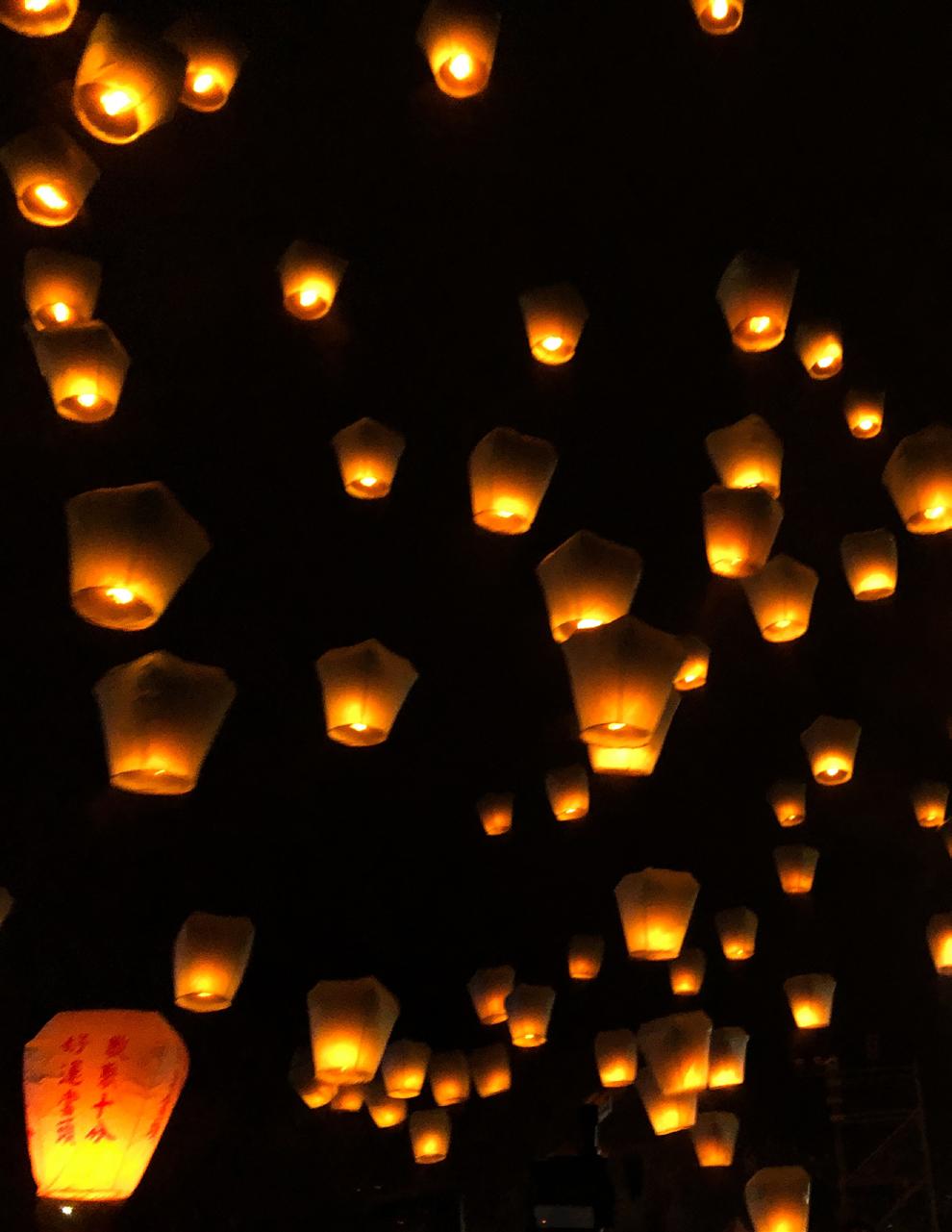
28 LIVING IN SINGAPORE
your dreams and hopes for the coming year. My young children loved it, but they ended up more painted than the lantern.
Launching a lantern in Shifen feels a bit daring because you have to stand smack dab in the middle of the train tracks to do it. Every now and then, an alarm sounded, and everybody moved back to the edges so the train could whiz by, clearing the sidewalk a mere two feet on either side. When the train was gone, the festival would spill back onto the tracks, nobody the least bit ruffled by the disturbance.
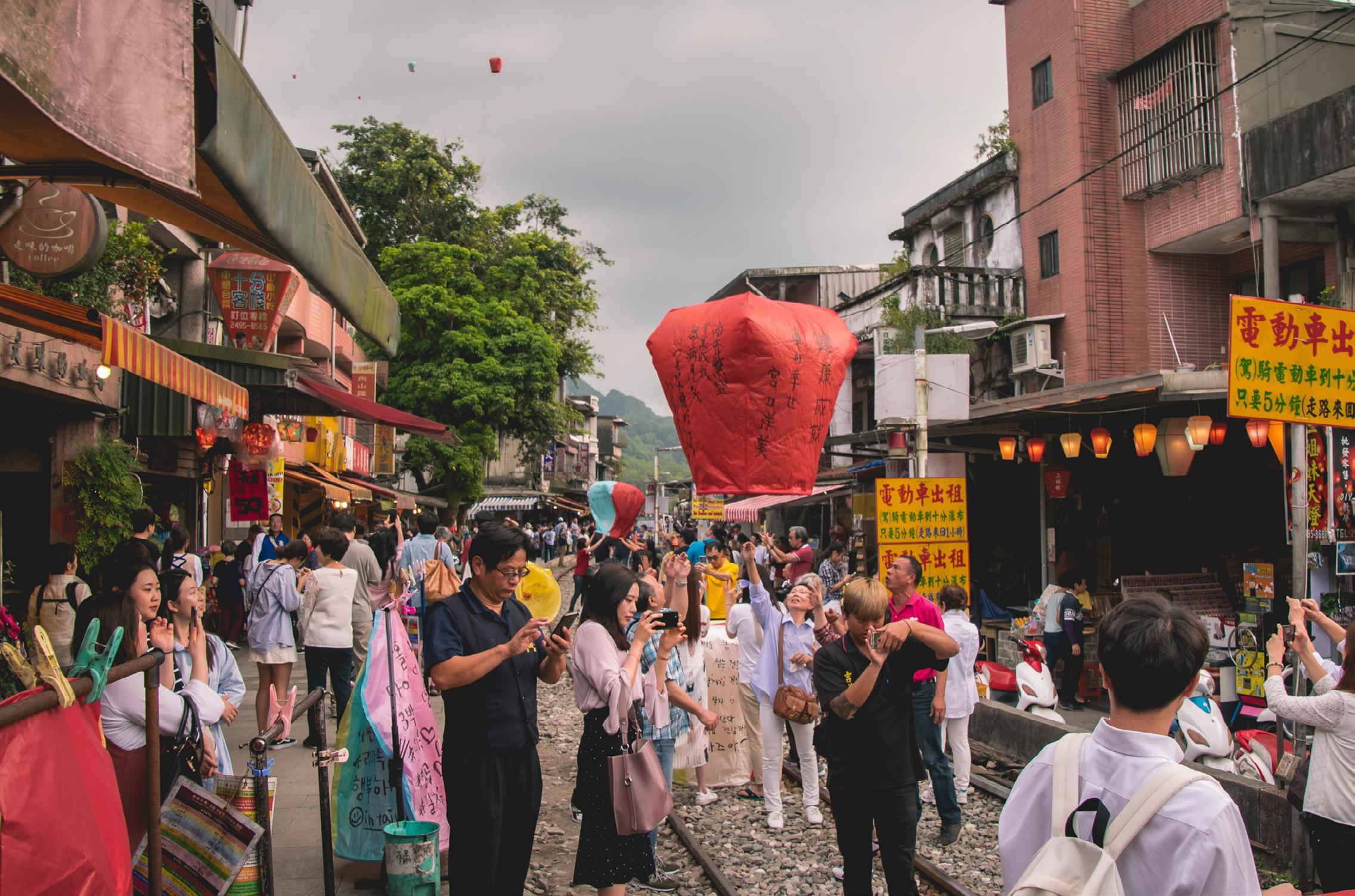
To launch our lantern, the vendor loaded our paper masterpiece with something to burn (perhaps paper?) and lit it while we all held a corner. We made our wishes and then let the lantern go, watching our glowing artwork rise higher and higher into the air, carrying with it our dreams
for the coming year. Launching a lantern is a lovely, symbolic gesture, something my kids still say is a highlight of our travel in Asia. Somehow watching a lantern disappear over the horizon feels incredibly spiritual. I still remember the total joy on the faces of a local elderly couple as their lantern took off. Lanterns aren’t necessarily good for the environment, but somehow, they’re good for the soul.
The day ended with a mass launch in the evening. In fact, so many people crowd the streets every year, even in the pouring rain, that they hold several mass launches throughout the night. Sadly, we were soaking wet from the rain, and our kids were tired, so we missed the big finish, something I still regret to this day. Oh well – it’s just another reason to go back to the beautiful country of Taiwan and the magical lantern festival.
LIVING IN SINGAPORE 29
Not-to-miss Festivals
Thaipusam
Singapore; February 5, 2023
This festival sees Hindu devotees in Singapore seeking blessings, fulfilling vows, and offering thanks. The Thaipusam ceremony starts in the early hours of the morning, with devotees carrying milk pots and wooden kavadis
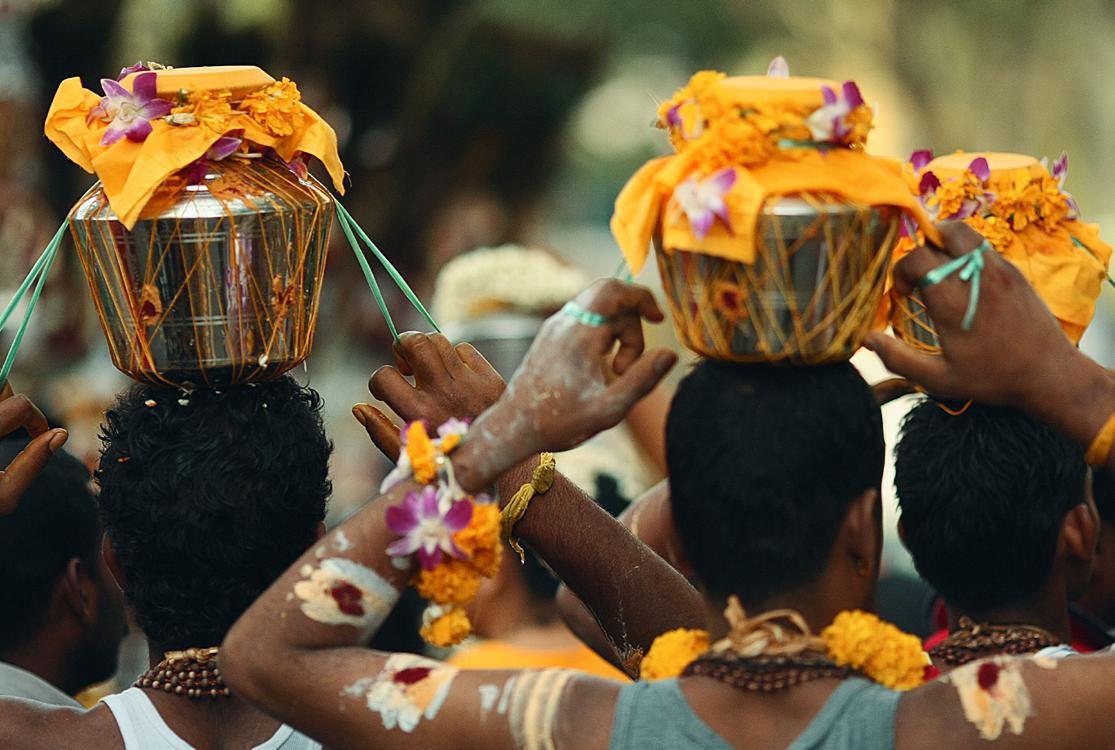
Holi
India; March 8, 2023
A rainbow battlefield in which participants fling brightly colored dye in every form imaginable. This festival welcomes spring and takes place all over India and in Indian communities across the globe, including Singapore.

Harbin Ice & Snow Sculpture Festival

Harbin, China; February 2023
The granddaddy of all ice shows, this month-long festival is the ultimate eye candy featuring a city built out of ice, snow, and lights.
Songkran
Chiang Mai, Thailand; April 13-15, 2023
What started as a purification ritual has evolved into a three-day water fight across all of Thailand, but the best place to experience it is in Chiang Mai.
Rainforest World Music Festival
Kuching, Malaysia; June 23-25, 2023
This unique festival brings together on the same stage renowned world musicians from all continents and indigenous musicians from the interiors of the mythical island of Borneo.
Naadam
Ulaanbaatar, Mongolia; July 11-15, 2023
At this festival predating Genghis Khan, Mongolians come together every year for the “Manly Games” to duke it out in wrestling, horse racing, and archery – all undertaken in a way you’ve never seen before.

Pingxi Lantern Festival
Shifen, Taiwan; February 5-8, 2023
This magical sky lantern festival takes place in a charming, authentic village. See main article.
30 LIVING IN
SINGAPORE
Mount Hagen Cultural Show
Mount Hagen, Papua New Guinea; August 19-20, 2023

This eye-popping cultural show features singing groups from all over the country, each wearing spectacular, traditional costumes.
Loy Krathong
Chiang Mai, Thailand; November 27, 2023
This Festival of Lights is celebrated all over Thailand with lit “baskets” floating on water. A mass sky lantern release in Chiang Mai is the most famous celebration.

Esala Perahera
Kandy, Sri Lanka; August 21-31, 2023
Lavishly decorated elephants are the headliners at the largest Buddhist festival in Sri Lanka, complete with musicians, dancers, acrobats, and singers.

Ati-Atihan
Kalibo, Philippines; January 21, 2024
A colorful festival consisting of tribal dance, music, indigenous weapons, and aboriginal-like vibrant costumes held in honor of baby Jesus.
Tet Nguyen Dan
Ho Chi Minh City, Vietnam; February 10, 2024
A massive event that rivals Chinese New Year, the Tet festival is the traditional Vietnamese celebration to welcome in the New Year and the arrival of spring, complete with gongs, drums, fireworks, and lots of gorgeous flowers.

LIVING IN SINGAPORE 31
For even more, check out the definitive source on festivals:
www.everfest.com
Coming Soon!


Thaipusam: a Time of Devotion and Joy
By Eric Walter
If you happen to be between Sri Srinivasa Perumal Temple on Serangoon Road and Sri Thendayuthapani Temple on Tank Road this February 5, you may see what might (by western standards) be an unusual sight.
A procession of Singapore’s Tamil community will be marking the climax of Thaipusam, a two-day Hindu festival of thanksgiving, atonement, and endurance.
As they make their way from one temple to another (a journey of 4 kilometers) singing hymns and prayers, many participants will be carrying pots of milk or semicircular steel or wooden frames known as kavadis, a Tamil word meaning “sacrifice with every footfall.” As a demonstration of their faith and sincerity, some participants literally connect their kavadis to their flesh with elaborate rows of metal hooks. Often decorated with feathers and flowers, kavadis can reach heights of 13 feet (four meters) and weigh up to almost 90 pounds (40 kilos). Some participants may also pierce their tongues with metal skewers known as vel.
To the uninitiated, the whole thing might sound grim, but the festival is actually a joyous occasion meant to honor the Hindu figure of Lord Murugan, a personification of virtue and youth and a vanquisher of evil. It is considered an honor to carry the kavadi and is believed to bring favor to the family. Kavadibearers prepare by praying and fasting for two days prior and then perform elaborate ceremonies at the time of assuming the burden.
Celebrated in Singapore, Malaysia, parts of India, and other areas with Tamil-speaking populations, Thaipusam is the high point of a month of spiritual preparation for many devotees, which includes a strict vegetarian diet. It is believed that only when the mind is free of earthly wants and the body free of physical pleasures can a person undertake the ordeal without experiencing pain.

Lasting for two days, the festival celebrates the full moon of the Tamil month, which is January or February. This year, it begins on February 4 with a procession including a chariot carrying a statue of Lord Murugan from Sri Thendayuthapani Temple on Tank Road to Layan Sithi Vinayagar Temple on Keong Saik Road.
Celebrants welcome onlookers and even those with cameras. Go very early in the morning on February 5 to Sri Srinivasa Perumal Temple to watch the celebrants preparing for the walk.
Really enthralled? Then consider a trip to one of the largest Thaipusam celebrations in the world, just outside of Kuala Lampur at the Batu Caves. More than 1.5 million people make the trip every year, and those carrying the kavadi climb more than 250 steps to the caves.
To learn more about Thaipusam, go to www.visitsingapore.com
34 LIVING IN SINGAPORE

LIVING IN SINGAPORE 35
The Land of a Million Elephants
 By Melinda Murphy
By Melinda Murphy
There are some vacations that just seep into your soul. For me, that vacation was our Christmas trip to Laos. I’d wanted to go there for a long time, but things like Covid always got in the way. This beautiful country, steeped in a rich cultural heritage, was well worth the wait. The people are as warm as the scenery is gorgeous. And we lucked out with bluebird skies and cool weather every day.
VIENTIANE

Most people I know only go to Luang Prabang, but we wanted to see a bit more of the country, so we flew first into Vientiane, probably the sleepiest of all Asian capitals. I like more local hotels, so we tried Chanthapanya Hotel, smack dab in the middle of “downtown,” so quiet that we weren’t sure we were really in the middle of the action. We were. There’s just not much action to be in the middle of in Vientiane though we did find a dive of a place near our hotel where we had the very best massage of our lives for $7. The Lao masseuse is almost an acrobat and you are their apparatus with them bending you every which way. Lao massages rock.
Vientiane mixes Frenchcolonial architecture with Buddhist temples such as the 16th-century Pha That Luang, which is a national symbol, but truth? The golden structure is beautiful, but there’s not much to see. Nor was the Patuxay Monument (the Lao version of the Arche de Triomphe) all that impressive. We far more enjoyed a visit to
You can only buy a ticket three days before your trip, and you must be in the city you want to travel from to purchase. Crazy, right? The good news is hotels will book your tickets for you.
Buddha Park, home to more than 200 Hindu and Buddhist statues, which sits in a meadow next to the Mekong River. We braved a really dicey stairway to climb to the top of the tallest
36 LIVING IN SINGAPORE
The Scoop on the New Laos Trains
structure there. There’s just no way that staircase would be deemed safe in any other country, and don’t get me started on the railing up top. Pure terror - but since we all survived, it was worth the view.
The food in Laos is absolutely delicious – a bit like Thai with a twist. And the food is darn cheap, too. We had more than a couple of huge feasts for about $25 all-in. We liked the food so much that we took a cooking class in Vientiane with Madame Phasouk, a course taught

in her home, sprinkled with a bit of Laotian history. The whole family really loved whipping up the delicious local specialties.
VANG VIENG
We took the new, hourlong train (opened during Covid) to Vang Vieng. We all loved this sleepy town, once the party town of Laos. Now, it’s cleaned up and quieter and the jumping-off point for all sorts of outdoor adventures.
We kayaked the river and did a little caving. My kids braved a zip line, too, before we made our way to one of the gorgeous blue lagoons And lounging by the pool on the river at our favorite hotel in Laos, the Riverside Boutique Resort, was

LIVING IN SINGAPORE 37
dreamy. Our massage here wasn’t as great as at Vientiane, but the meal at the Luang Prabang Bakery was not to be missed. If you ask my kids what their favorite part of our entire trip was, they’d say Vang Vieng.
LUANG PRABANG

Luang Prabang captured my heart, delivering everything I’d hoped to find in Laos: culture, nature, good food, and family fun. An added bonus? The sunsets over the Mekong River are nothing short of spectacular, best seen from a boat on the water.



To get to Luang Prabang, we took another train as it’s faster than driving and a bit of an experience. The city is bigger than I realized, but the Old Town main street is quite a lovely and manageable walk, lined with cute restaurants, shops hawking local crafts, and breathtaking wats (temples). At night, the street turns into a huge night market with local crafts and foods with not a fake handbag in sight, unlike the night market in Vientiane.
We did a lot of great things in Luang Prabang that you just can’t do anywhere else. One morning, we got up before sunrise and offered alms to about 200 local monks, a silent ceremony that dates back to the 14th century. The monks collect alms to keep their vows, while the locals give alms to practice their Buddhist faith. The hotel organized sticky rice and packets of food and schooled us in the ins and outs of what to do. We donned special scarves and sat on small stools while the monks filed by with their bowls at their sides. We placed a bit of rice and a packet of food in each bowl. At all times, our heads had to be below the monks, and we had to remain silent. As girls, my daughter and I had additional rules to follow: we weren’t allowed to touch the bowls or look the monks in the eye. I was bummed my good travel camera was on the blink because it was a very beautiful and
moving vision, sitting under one of the prettiest wats I’ve ever seen with these men in their saffron robes filing by as the morning mist lifted. (Tip: if you buy a good camera in Singapore, also buy a humidity-free storage cabinet.) And I loved that the monks offered food to the local poor before heading back into the wat.
That afternoon, we did a workshop at Ock Pop Tok, a social enterprise that aims to help the local indigenous women. We learned all about the different forms of silk weaving and that each indigenous people has their
38 LIVING IN SINGAPORE
own style. Then, we got a chance to dye scarves and t-shirts, even making the dyes out of items found in nature. We chopped and boiled wood and ground leaves to get just the right colors. My arts-loving daughter had a great time, but even our menfolk enjoyed the day, ending at a restaurant on the river, taking in the sunset.
The following day, we learned all about rice at another social enterprise called The Living Land Farm, and let me tell you, I will never look at another bowl of rice the same way again. What hard work it is to get


that bowl! We went through the entire multi-step process from plowing the very gooey muddy field behind a water buffalo named Bentley to harvesting the mature plants to grinding rice into flour. We also learned to make the tools and baskets. It was one of the best experiential tourism workshops I’ve ever attended.
After, we made an unplanned stop at another social enterprise, the Laos Buffalo Dairy (see next page), on our way to Kuang Si Waterfalls Holy cow! There’s



a reason this series of turquoise swimming pools and falls are famous. They are breathtakingly beautiful. My son and husband braved the frigid waters and went for a rather invigorating swim. Me? I got my feet in. Wimp.

LIVING IN SINGAPORE 39
We made our way back to the hotel and had a fabulous meal at Manda de Laos at the edge of a gorgeous lily pond, a UNESCO heritage site just a block from our recently renovated, beautiful hotel, Villa Mali Boutique Hotel, which is in the old town part of the city.
There was more we could have done: bike rides through the flat city, a climb to the top of Mount Phou Si, Luang Prabang’s sacred hill that offers impressive views. We just ran out of time. Drat.
FINAL THOUGHTS
Our trip to Laos was just what I was craving: culture, nature, and family fun. My advice? If you’re going, go soon. I think the new train line and the airport will see a boom in tourism. Luang Prabang’s old town is already undergoing a revitalization with new, fabulous restaurants

cropping up and hotels completing renovations. I want everybody to experience the beauty of what is known as “the land of a million elephants” (an ironic name as I didn’t see a single elephant). But I’m afraid the charm of the unspoiled land will soon be forever changed. I genuinely hope Laos can hold onto what makes it so very magical.
A Midlife Crisis with a Purpose
In 2014, two families living in Singapore decided to shake things up, trading in their corporate lives for what they thought would be a simpler life in Laos. American Rachel O’Shea laughs, saying she had visions of living the easy life, opening a guest house and raking in the money.
It turns out that life now is not easy but truly fulfilling. The quest to find good cheese in Luang Prabang has become a social enterprise helping farmers across Laos.
When the idea hit them to open a dairy, none of the new transplants knew anything about how to milk a buffalo. Heck, nobody in Laos seemed to know either. So Rachel and her partners watched many YouTube videos and talked a local farmer into letting them try to milk his water buffalo. The rest is history: the Laos Buffalo Dairy was born.
Today, the dairy cooperates with people from villages in and around Luang Prabang by renting their buffalo, providing the families with a regular income stream from an underutilized resource, female buffalo. The farm provides work for other locals, as does the cheese-making effort.
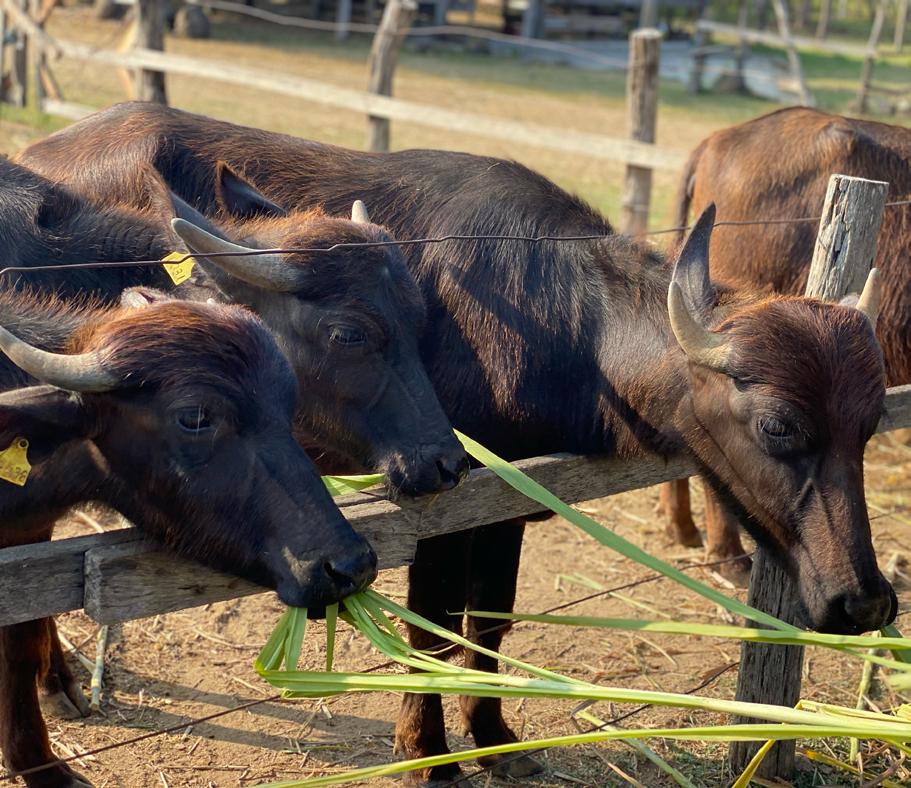
The dairy also works to educate other farmers across Laos, even going as far as teaching them about adding water buffalo milk to rice for added protein for children.
Visitors get a chance to play with bunnies, rub pig bellies, and – yes – try to milk a water buffalo. Plus, you learn a lot about the local agriculture and people.
“Growing up in Wappingers Falls, New York, this not what I thought I’d do in my retirement,” said Rachel, “but I wouldn’t have it any other way.”
40 LIVING IN SINGAPORE
FIND YOUR EXCELLENCE HERE
At Stamford American, I was able to try out AP courses in different subject areas to figure out what subjects interested me. The school’s music department also supported my interest in music and offered me numerous performance opportunities.
The personal attention given to each student is one of the unique features of Stamford American. Everyone has their own interests and goals, and the faculty and academic counseling team have worked with each of us personally to find a path that fits our needs.
I’m currently attending UC Berkeley to pursue a Bachelor of Science in Chemical Biology, and a Bachelor of Arts in music as well. My ultimate goal is to use my education and passion for the sciences to make a difference, whether it’s in medical practice or medical research.
Natasha Tjeng Valedictorian, Class of 2022 Stamford American International School

LIVING IN SINGAPORE 41
21/2/2020 – 20/2/2024
of
August 9, 2022
August 8, 2026
Stamford American International School CPE Registration Number: 200823594D Period
registration:
to
THE LOWDOWN ON LO HEI THROW, SCREAM, EAT

During the Chinese New Year holiday, we’ve all been eating Lo Hei, but what is it exactly?
By Kevin F. Cox, Culinary Explorer
The Singaporean Chinese take the Lunar New Year very seriously. It’s a time to celebrate things to come, casting upon friends and loved ones wishes of prosperity, abundance, and good luck for the year ahead. But they don’t bring in the new year gently; think bright lights and jackedup prices on everything for a week to help kickstart that prosperity. But perhaps the
most raucous display of the Lunar New Year festivities is throwing food. Not just any food, mind you, but a specific dish, known as Yu Sheng, translated literally to mean “raw fish” and used in the traditional Lo Hei celebration to signify abundance for all who participate.
There is some controversy as to the origin of Lo Hei and the bestowing of prosperity to
all in the new year. Perhaps dating back to ancient China, the contemporary version was created in 1964 right here at Singapore’s Lai Wah Restaurant by chef and culinary king Than Mui Kai. And it has been celebrated annually here and in Malaysia ever since. So it’s only natural that you, too, should embrace your expat experience and join in on the flying fish fun.
It seems such a simple dish: slices of raw fish and veg layered in an eye-popping circular display of freshness. But that’s where the beauty ends because all hell breaks loose around the table when the party begins. So one should not undertake the Lo Hei celebration lightly. Indeed, two critical aspects of the event must be understood and followed by all daring enough to undertake it: first, the Yu Sheng dish itself, and second, what to do with it.
The Dish
Yu Sheng is a complex, Teochew-style raw fish salad consisting of up to twenty-five ingredients and capped with thin slices of raw mackerel (traditional) or salmon (modern), shredded vegetables, nuts, and a variety of sauces and condiments. Each ingredient represents a
specific wish: raw fish for abundance; carrot for luck; chopped peanuts for gold, silver, and eternal youth; daikon for a flourishing career; cinnamon for a sweet life – the list goes on. It’s the centerpiece of Lo Hei, and despite its once-a-year appearance during the Lunar New Year, it’s enjoyed in nearly every Chinese household, restaurant, or group gathering across this Little Red Dot.
The Celebration
It’s fish, it’s veg, it’s sticky sauce and tiny chopped nuts. And to properly celebrate Lo Hei, you have to, well, toss it all up in the air. But the correct manner of consuming the salad is essential. First, all diners must, in unison, grab chopstickfuls of the salad from the large communal platter in the middle of the table and throw them in the air seven times—not six, not eight—representing the seventh day of the Chinese new year. The words “Lo Hei” must be chanted loudly, often with vigor, with each fling of the food. The higher and messier the toss, the more fortune will prevail. Everyone at the table must participate – no shyness permitted here, or one risks missing out on the prosperity that will surely ensue. Afterward, the mess across the table is pulled together and served to each diner as the starter to a typically lavish Chinese meal. Not only is it fun to celebrate Lo Hei, but one bite of the pile on your plate and you’ll realize it’s also delicious.
So as you celebrate this new year of the Rabbit, gather with friends and family, toss a little fish while yelling Lo Hei, and bring some prosperity into your future!

Arpin International Group is a leading international household goods moving and storage company with over 120 years of experience led by five generations of the Arpin family.



















With offices in N. America, Europe, Asia, and the Middle East, and a global network of over 3,500 quality supplier partners, Arpin provides a seamless moving experience to our customers worldwide. Your complete satisfaction is our top priority!


44 LIVING IN SINGAPORE Sea Air Land Storage Arpin International Asia Pte Ltd. Goldhill Plaza, 51 Goldhill Plaza, Unit 19-08, Singapore 308900 arpinintl.com
Q u
W o
M
℠
a l i t y L e a d e r s I n
r l d w i d e
o v i n g
Sensory Overload
By Sue Harben
Eye candy. That’s the phrase that comes to mind when I think of Chingay. Brightlycolored floats, fire twirlers, dancing dragons, stilt walkers, giant puppets, spectacular light displays, and performers draped in the most vibrant and colorful costumes you’ve ever seen, all strutting their stuff to fans in the stands. The largest street performance and float parade in Asia is, quite simply, breathtaking.
Chingay is held in Singapore at the F1 Pit Building during the first weekend of the Lunar New Year celebrated by Chinese, Malays, Indians, and Eurasians, too. The massive parade first started to quell unhappy Singaporeans who resented the country’s ban on fireworks (which are usually set off on New Year’s to drive away evil spirits). That first parade in 1973 celebrating the Year of the Ox was such a hit that it has since become an annual tradition.

The word chingay is equivalent to the Mandarin zhuang yi (妆艺), which means “the art of costume and masquerade” in the Hokkien dialect. There could be no more fitting name. Each and every costume is a work of art, and there are costumes from across the globe. In 1987, The Straits Times featured a pop group from Tokyo, and ever since, performers from around the world have delighted the Singaporean audience.

Don’t think you’ll go and just watch. Nope. The audience is an active part of the show. Each and every spectator receives a goody bag which includes props and a bottle of water to help offset the heat. As the show moves along, the audience is asked to use various props, which can include clappers, light sticks, and gold pompoms, making the show all the more fun and magical.
And yes, at the end of the parade, there are fireworks… just to be safe and keep those evil spirits at bay.
The parade takes the community five months to prepare and is such a hit that it’s held not once, but TWICE. Chingay Parade 2023 completes the trilogy that began with 2021’s “Light of Hope”, followed by 2022’s “Ignite Our Dreams,” and 2023’s “Embrace Tomorrow.” Tickets range from $20 to $60. Go to www.chingay.gov.sg for more info.
Diwali Festival
By Faith Chanda
Diwali is one of the most important and meaningful holidays in the Indian calendar, and also my favorite. Not only is it a Hindu religious festival, but it is a festival of lights and a celebration of good over evil all in one joyful package.

I tell people who ask about our multicultural family that I’m “Indian by marriage” and I mean it. The best Diwali I ever spent was, of course, in India. We’d brought several of our most adventurous friends and family on a trip around India and arrived en masse at my in-law’s home shortly before Diwali. The house was abuzz with activity all day. Rangoli, traditional designs made with colored powder, decorated the floors, especially at the doorway, to welcome both guests and the Hindu goddess Lakshmi, who represents wealth and prosperity. The designs are usually made painstakingly by hand and the detail in some designs is breathtaking. We each gave it a go and concluded that the wise folks who came up with templates to “hack” this task were on the right track! Mixed into the designs is always a set of footprints, which show that Lakshmi has been there to bless the house. And with a house bursting at the seams with some of our best friends and extended family, we certainly felt blessed!
New clothing is usually worn on Diwali to symbolize a clean slate for the new year. The house was looking shiny and spiffy thanks to a thorough cleaning so as to be a most fitting venue for the goddess Lakshmi to enter, bringing good luck for the coming year.
As anyone who cooks Indian food at home knows, the whole house smelled all day of the grand spread that would be served at the Diwali party that night. Something about the scent of the fresh vegetables being chopped, mixed with the spices hitting hot pans, was simply tantalizing (like the smell of the turkey roasting in the oven on Thanksgiving).
Hands down, the most meaningful part of the entire celebration is the lights. Small clay pots called diya filled with oil are placed all over the house (inside and out) and fireworks are set off, all as both a welcome and a warning. Friends, family, and good luck are welcomed by the shimmering lights. But bad spirits be warned: the loud noise is meant to scare them off and the light symbolizes the triumph of good over evil, drawn from the story of Lord Rama’s glorious return from exile or Goddess Durga’s victory over a demon. Either way the result is the same: truth and light win out, every time.
As daylight faded into a foggy night, the lights glowed brighter and the party kicked off. It was like a combination of Thanksgiving, Christmas, and New Year’s Eve. Friends and family arrived with gifts and there was enough food to feed a proverbial army. The music turned up and the revelry lasted long into the night.
The other thing that lasted? The bond we all shared: a group spanning three generations and hailing from five countries – and the sense that, for one brief moment, all was right with the world.

Singapore's National Day
By Richard Hartung
National Day on August 9 is an unexpected gem amidst a plentitude of multi-ethnic holidays in Singapore and should be a welldeserved favorite festival for anyone living here. Considering National Day’s quietness, calling it a favorite might seem like a surprise. Yet it has a plethora of advantages.
For one, it’s celebrated on more than one day. Singapore takes National Day very seriously and starts planning the following year’s


National Day celebrations the day after the current one ends. And once it’s planned, it’s practiced. In 2022, there were more than half a dozen rehearsals and two “Previews,” where tens of thousands watched a full rehearsal, and hundreds of thousands of residents could watch helicopters flying the flag overhead and jets roaring past in formation as they practiced for the big day. Even the fireworks were tested. While many attendees at the American Association’s Fourth of July celebration last year at the Marina Barrage may have bemusedly imagined that the jets flying overhead and the fireworks after sunset were arranged for the event, they were actually part of a National Day rehearsal.
The decorations are also among the longestlasting due to somewhat quirky Singapore regulations. For most of the year, residents here are not allowed to fly the Singapore flag at their homes. However, from July 1 through September 20, it’s permitted to fly the flag.
Almost the entire population of Singapore gears up for a day of celebration, food, and fun.
Tens of thousands of people here put up a flag shortly after July 1 to start their National Day celebrations, and bunting, strings of miniflags, and other decorations are on display. Even though Christmas decorations go up in mid-October and stay put until just past Christmas, they rarely stay up as long as the three months for National Day decorations.
And come National Day itself, almost the entire population of Singapore gears up for a day of celebration, food, and fun. Families gather for their favorite dishes or barbecues, and small events dot the island at parks or other public places.

The big event is the National Day Parade, a show like no other in Singapore. Thousands of lucky ticketholders, many of whom received a ticket to
the event in a lottery, show up at the Float@Marina Bay or wherever the Parade is held. Government leaders come in next. Everyone watches the Singapore military and uniformed groups such as the Boys or Girls Brigade march past. Jets zoom overhead, and helicopters carry the flag over the venue. Attendees then watch an extravaganza of a show with a cast of hundreds, and hundreds of thousands, if not millions, watch the event on television or via streaming. Listen carefully as the event comes to a close, and you can hear attendees at the event and Singaporeans in their homes all across the island reciting the pledge and singing the national anthem. It ends up with the best fireworks of the year.
And Singaporeans overseas participate as well. In Seattle,
more than a hundred Singaporeans went to a National Day event in August to eat their favorite foods, recite the pledge, sing the national anthem, and catch up with friends – just like they would in Singapore.
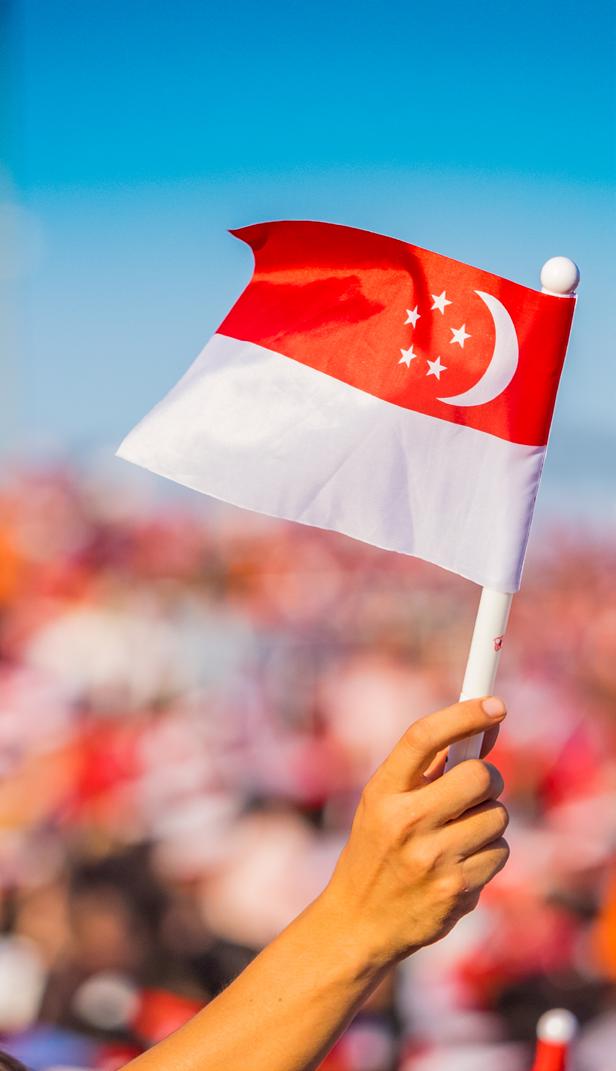
While families celebrate religious holidays or even New Year events, few are as glamorous as National Day. Even Chinese New Year can seem less elaborate, despite the decorations and foods, as decorations are up for a shorter time, and it is more often celebrated on the day in families or small groups rather than by the nation as a whole.
Trite as it may sound, National Day is my favorite festival day here and a holiday well worth celebrating.
Why is a Relocation Management Company (RMC) so important?
Country shutdowns and border restrictions are fast becoming a distant memory for many of us. Organizations globally have already resumed business travel for their associates worldwide. As we kick start the new year, many organizations may have plans to relocate their employees to other countries to work on potential mergers and acquisitions, expansion strategies, or new projects. Whether an organization plans to move 1 or 1000 employees, having a relocation management company (RMC) has proven beneficial to both the organization and the relocating employee.
We conducted an interview with Amanda Jones, Senior Vice President of Sales & Account Management at SIRVA BGRS, to understand exactly why an RMC can help organizations of all scales and sizes in their employee relocation and moving needs.
Can you tell me more about SIRVA BGRS and what the company does?
Amanda: SIRVA BGRS is a global leader in relocation and moving services. We offer end-to-end assignment management and relocation support to clients and their employees globally. With 77 locations servicing 190+ countries worldwide, we offer an unparalleled footprint supported by extensive product offerings and robust technology solutions that support the organization’s global and diverse workforce. We cover a wide range of services, from employee relocation and household goods to commercial moving and storage.
Why is an RMC crucial in the employee relocation process?
Amanda: An RMC like SIRVA BGRS has the capabilities and technology to oversee the entire relocation process from orientation, onboarding, advisory services, visa and immigration, home and school search, as well as settling-
in and destination services. This not only eases the load of HR and mobility professionals but it allows the company to focus and excel in its core business without worrying about the intricacies of immigration laws and market practices for finding homes or schools for relocating families. This gives the employee and their family a single point of contact instead of having to liaise with multiple vendors. It also makes employee relocation more cost-efficient and saves time and resources.
Can SIRVA BGRS help AAS readers in their home moving process?

Amanda: Yes. Allied Global Van Lines is our integrated moving service and provides door-todoor removal of personal effects for clients worldwide. Allied won the Moving Company of the Year by Forum

for Expatriate Management (FEM) under the Expatriate Management & Mobility Awards (EMMAs) in 2022. This award was given to Allied because of our true spirit of always putting the customer first during the most difficult of times and its ability to fully support urgent and mission-critical moves.
To find out more about SIRVA BGRS’s relocation and moving services, drop us an email at concierge@sirva.com.


50 LIVING IN SINGAPORE
WE OFFER END-TO-END ASSIGNMENT MANAGEMENT AND RELOCATION SUPPORT TO CLIENTS AND THEIR EMPLOYEES GLOBALLY.
ADVERTORIAL






LIVING IN SINGAPORE 51
Getting to Know the True History of Hanukah
In hosting Dr. Adam Garfinkle and his wife for dinner one evening a few years back, it hit me that my daughter and I had very little expertise on Judaism’s dietary restrictions, let alone on Judaism itself. It’s not as though we’ve had no Jewish friends, and Israeli diplomats have also opened their homes to me and my daughter many a time to indulge us in amazing homemade delicacies not found in stores. However, Judaism has more intellectual content than what latkes and jelly donuts let on.
Q&A
Dr. Adam Garfinkle
by Lily Ong
Empire led by a family called the Maccabees. The root of the word Hanukah means “dedication,” as in of an altar. And that really happened.
The story most Jews learn through their families or in Hebrew school starts there, but it then simplifies, prettifies, truncates, and massively reinterprets what actually occurred. This reinterpretation, undertaken about 350 years later, was done knowingly and for what was believed at the time to be good reasons.

So when AAS hoisted “festivals” as the theme of this issue, Hanukah - perhaps the best-known Jewish celebration among non-Jews - came to mind. Naturally, I sought Adam out for enlightenment. Why? He’s not your everyday guy. Aside from being an observant and knowledgeable Jew, Adam is a widely published author, editor, teacher, and former State Department official. He also spent a year in Singapore during 2019-20 as a Visiting Senior Fellow at RSIS/NTU.
As is often the case with our continuing consultations on geopolitics, I found Adam’s depth of knowledge on Hanukah a deeper plunge than I expected. I’m gladly sharing here the stimulating conversation we had.
My first question: From where does this holiday originate? What’s it about?
You’ve asked a key and straightforward question. I wish the answer could be as neat and simple, but, alas, it isn’t.
In a narrow historical sense, the holiday called Hanukah was originally a celebration of the rededication of the Second Temple in Jerusalem in the year 164 BCE following successful military operations against the occupying Seleucid
What happened between 164 BCE and the 3rd century CE to cause this transformation of the story?
A lot happened; here’s the short skivvy.
Alexander the Great died in 323 BCE, and his great empire soon broke into four parts. The entire Eastern Mediterranean fell under the control of the part known as the Seleucid Empire. Despite the divisions and instability that followed the shattering of Alexander’s empire, Hellenism grew increasingly dominant and helped to unite by means of cultural diffusion in otherwise diverse ethnolinguistic regions. It was against the wave of Hellenistic culture that the Maccabees rose up against their Seleucid overlords.
However, in the sanitized holiday story, it’s the good Jews against the bad “Greeks,” sometimes called Assyrians and Seleucids. In reality, it was Jew against Jew, priestly faction against priestly faction. The Seleucids, for their part, were far more concerned with other adversaries--notably the Parthians (ancient Iranians)--and could barely have cared less about Judea or Jewish religious practices. They cared only that this small country paid its taxes and did not make distracting trouble.
But Jewish rivalries and communal violence did cause trouble, so the Seleucid rulers in Antioch sought local allies to support and sent troops to help them quell the instability. That proved difficult, and an angered Seleucid king Antiochus then banned Sabbath observance and ordered the defilement of the Temple with idols, pigs, and more. Some pro-Hellenist High Priests eagerly followed his orders. This outrage turned Jewish wrath against both the Seleucids and their Jewish supporters. That triggered the war that Jewish guerrilla fighters eventually won, which enabled the re-dedication of the Temple in 164 BCE.
I assume this background is necessary to understand what happened afterward.
It absolutely is.
In the standard religious school story, the war ended with victory and Jewish independence in 164 BCE. But it actually did no such thing. The treaty ending the fighting gave the Jews control over the Temple Mount, assuring their religious freedom. However, it did not involve sovereignty: Judea was still a vassal province of the Seleucid Empire, and Jewish High Priests were still appointed from Antioch.
Before long, fighting resumed between the Maccabees and the Seleucids and lasted for years. More fighting occurred after 164 BCE than before it. After around 20 more years of intermittent warfare, the Maccabees achieved two things: They wore down the Seleucids and at least temporarily won the culture war among the Jews against Hellenism, whose fundamental values were at odds with traditional Jewish ones.
The standard storyline notwithstanding, the Jews never defeated the Seleucids militarily once and for all. They didn’t achieve formal independence until the Seleucid Empire crumbled around them more than half a century later. The achievement of de facto independence really turned on the fact that the Seleucid regime remained internally unstable and beset by other more formidable military challenges. At a certain point, Seleucid rulers, endlessly looking over their shoulders, simply lacked the bandwidth for yet more conflict with the pesky Jews.
Interesting, but where’s Hanukah as we know it today?
We’ll get there soon, I promise.
Renewed Jewish independence did not produce a “happily ever after” Hollywood-style finale. Instead, it gave birth to the Hasmonean dynasty, founded in 141 BCE, which, by all accounts, was a disaster. Sandwiched between short interludes of peace were revolts, rivalries, assassinations, great thefts, small wars, and even a son letting his mother starve to death in a dungeon. Intra-Jewish culture wars over Hellenization also returned, and the Maccabean faction didn’t always end up on top.
The Hasmonean dynasty lasted only 103 years, ultimately falling prey to its rulers’ avarice and misjudgments. One Hasmonean noble conspired with the Romans to best his own brother to seize power. Having let the Roman fox into the Jewish hen house, Rome soon invaded and conquered Judea in 37 BCE.
Then things got worse. Some Jews, with the model of the successful Maccabean wars dancing in their heads, resisted Roman authority. They revolted in the year 66 CE, with the result that angered Roman leaders responded by destroying the Second Temple in the year 70 CE, putting an end to Jewish religious rites centered around it. See, we’ve made it to the Common Era!
Yes, but Hanukah still doesn’t exist as it is today.
For that to happen, several more catastrophes were required.
One might think that the Jews would have learned their lesson after the Temple was destroyed and backed off to wait perhaps for a chance to rebuild, just as occurred after the first Temple was destroyed. Nope. After a futile uprising of Jews in Cyprus, Egypt, and Cyrenaica against Rome in 115, the real disaster happened. Some zealots in Judea, still fired up by hopes for a repeat of Maccabean history, mounted yet another revolt against Roman occupation in 132 CE. This revolt, led by a charismatic firebrand re-named Shimon BarKokhba (“son of a star”) by the revolt’s spiritual leader, Rabbi Akiva, scored some spectacular
initial successes. Rabbi Akiva identified Bar-Kokhba as the long-awaited messiah, so a millenarian fever fanned by the severity of Roman rule added an otherworldly dimension to the revolt.
Early Jewish military successes embarrassed the occupiers, caused some reshuffling of political power in Rome itself, and thereby created new political incentives to win the Jewish war. By 135, Bar-Kokhba’s army had been crushed: Roman troops then roamed the land, burning villages, raping women, selling untold numbers into slavery, and massacring an estimated 580,000 people. They turned the destroyed Temple Mount into a garbage dump, promulgated a series of harsh edicts against remnant Jewish communities, and began forced exile of the remaining Jews from their land.
Talk about history rhyming: Isn’t the delay between Roman occupation in 37 BCE and the destruction of the Second Temple in 70 CE a replay of what happened earlier with the Babylonians and the destruction of the First Temple?
Indeed, it is, although in the Babylonian case, the interruption was much briefer. It’s an important point, however, because in both cases, the experience of exile transformed Judaism.
Had it not been for the first exile, a successful response to the second exile could not have occurred. In Babylonia, exiled Jewish elites, without sovereignty, a religious center, or even a strong presence in Jerusalem, began turning Judaism into a trans-territorial and portable religious system. They did so with books at a time when a critical mass of deep literacy was just evolving. They set out to refashion a more or less typical ancient sacrificial ritual conducted by a small priestly elite into normative, law-based religion binding on every Jew. When the even greater disaster of Rome befell the Jewish people, the Rabbis of that time--once again without sovereignty, religious center, or a significant presence in the land--took the process even further. That is where Hanukah, as we know it today, comes from.
So the transformation of the Hanukah story from a military victory to something very different was a response to a calamity?

Exactly. While the rebels against Rome had in mind the model of the successful Maccabean wars and the lure of redemption by force of arms, the rabbis of the mid-2nd-century CE had a very different model in their heads. They knew how conflict among Jews had led to the destruction of the First Temple, and far more vividly, they saw how the internal intrigues, betrayals, and hatreds of Hasmonean times led to the Roman conquest. Even more important, given the disaster of the Bar-Kokhba war and the exile, they saw how the messianic temptation joined to force of arms had driven the Jewish people to the edge of total destruction. So in Yavne, a little village in what is today north-central Israel, a small group of rabbis led by a man named Yohanan ben-Zakkai transformed Judaism a second time. Ben-Zakkai and his associates replaced the mindset that had led to the shattering of Jewish existence with a new one they hoped would not only prevent permanent oblivion but ultimately bring about the restoration of the nation to its promised land. They created what we today call Rabbinic Judaism. These rabbis were not fantasists or mystics. They knew what they were doing; they knew the basic truths about the past for what they sadly were, and they found them well worth transcending, even if the process required the bending of historical facts. They redesigned Jewish theology by creating a post-Temple liturgy that replaced the original theology that tied together the one God and His chosen People and His Promised Land with one that emphasized a procession of sin, exile, and redemption.
What’s one to derive from this transformation?
This transformation gave pride of place to three key understandings.
First, foreigners hadn’t caused the suffering and defeat of the Jewish people; the Jews themselves were responsible because they had
54 LIVING IN SINGAPORE
failed to respect one another’s dignity, to be compassionate, forgiving, and pious. Into the liturgy, the rabbis placed the message that “in the face of our sins were we exiled from our land,” and they raised the sin of “gratuitous hatred” to the very top of their list of moral abominations.
Second, it was not military power, wealth, or grandeur that secured the people’s independence and freedom but faith in God to keep His promises to Israel. That is why the rabbis excluded Maccabees I and II from the canon of the Hebrew Bible and why they chose a text from Zachariah to be read on the Sabbath of Hanukah, the key verse of which states: “Not by power, and not by might, but by My spirit, says the Lord of Hosts.” Not glorious battles but divine intervention with a few miracles tossed in here and there – like the miracle of the oil lasting eight days to light the Menorah that should have sufficed only for one – is what turned the trick.
Wait! You’re saying that the miracle of the oil story dates from at least 300 years after it supposedly happened?
Yes; there’s zero mention of it in any earlier source.
What about the tradition of Hanukah being an eight-day holiday? How did that come about?

Here’s what happened in 164
BCE. A few months before the re-dedication of the Temple altar in that year was supposed to be the major festival of Succot (Tabernacles). But Succot, an eight-day holiday involving the waving of palm fronds and a water festival with fountains illuminated by giant torches on the Temple Mount, couldn’t be celebrated in wartime Jerusalem as usual. So the first thing the Maccabees did after regaining control of the Temple was to celebrate Succot a little late. That’s why eight days, and that’s why the torches, the lights. The custom of waving a lulav on the Festival of Lights persisted for some 200 years.
Back to the transformation: Third, the rabbis focused on instilling humility, patience, and virtue in Jews in place of quick-fix hopes for messianic redemption. God would redeem the Jewish
people from exile yet again, but He wouldn’t issue insurance policies against future sins and their consequences. Each Jew had to do their part to bring redemption about by being true to the Torah and observing the commandments. In this way, the rabbis restated the essence of the covenantal story at the heart of Judaism in terms that made sense for the new situation.
The transformation of the Hanukah story was thus part and parcel of the transformation of the entire framework of the Jewish religion after the year 135. The fundamentals didn’t change: A unitary creatorGod, with the Jewish people as His chosen agent, would spread ethical monotheism throughout the world. But the narrative shifted from the ancient Near Eastern God/People/Land formula to the Sin/ Exile/Redemption formula. In that transformation, the idea of Israel as a “light unto the nations” and a “kingdom of priests,” as the Torah phrases go, took on a new and accentuated importance: By redeeming themselves so that God would one day ingather the Jewish people to their land they would, while roaming in exile, help redeem humanity itself.
This is certainly not power as conventionally understood.
Indeed. How could a small stateless and defenseless exiled people help redeem humanity?
Remember: “Not by power, and not by might…….” In this belief system, it is the spirit that matters, not power, as conventionally understood. A little light and a still-small voice can make a big difference; that’s what the rabbis taught, and still teach, Jews to believe.
LIVING IN SINGAPORE 55
The History of Chijmes
By Marc Servos
At the heart of Singapore’s Civic District and amid urban surroundings, located at 30 Victoria Street, is CHIJMES, a popular destination that hosts an array of nightlife venues and lifestyle services. Passing through the white-colored gates at the main entrance in front of the Gothic Revival chapel or other points of entry at cloistered walls on Bras Basah or North Bridge Roads takes the visitor to the self-contained architectural block, consisting of buildings from different eras. The structures are formed around courtyards, an accommodating feature for their historical use and which continue to radiate their roles from an earlier time.
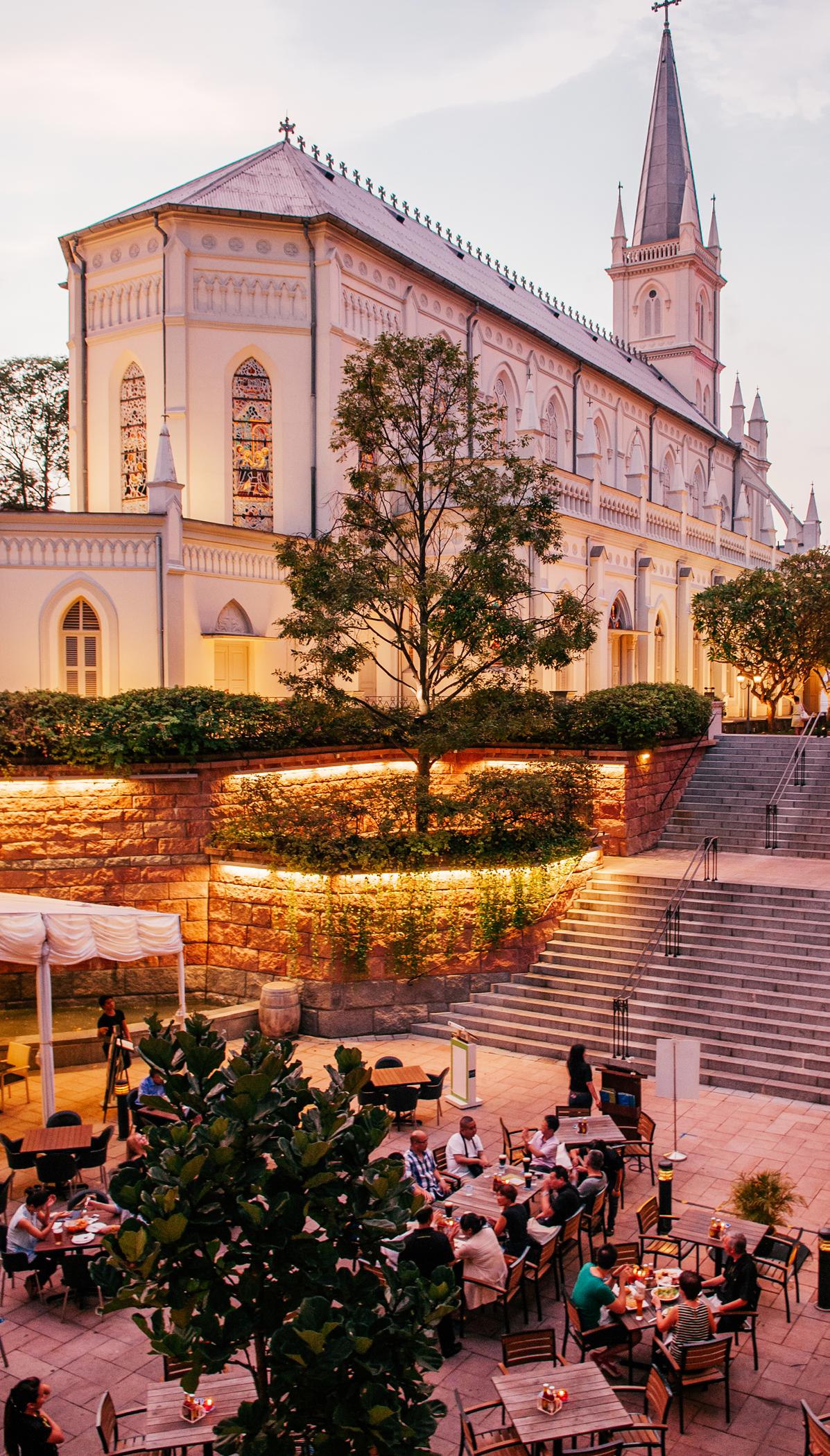
CHIJMES, pronounced “chimes,” is an acronym for Convent of the Holy Infant Jesus Middle Education School. It is part of the Catholic convent of CHIJ, and the schools it governs today trace their history to this structure, going back to the mid19th century. The present name was adopted in 1990 when the structure had already ceased to be used in its previous capacity.
Located at the corner of Victoria Road and Bras Basah Road is the oldest structure at CHIJMES –and the second oldest building in Singapore after the Arts House (1827) – known as Caldwell House, built in 1840-1841 and named after HC Caldwell, a Magistrates senior clerk. It was designed by Irish architect George Drumgoole Coleman, who also designed the Armenian Church at Hill Street. In
the early 1850s, French priest Father Jean-Marie Beurel purchased parcels of land for a girls’ school and Caldwell House for the Sisters of the Holy Infant Jesus. There, four Sisters, led by French nun Mother Mathilde Raclot, took residence after they arrived in 1854. Shortly after, the Sisters founded the Home for Abandoned Babies, an orphanage and refuge, and began building the walls facing the above streets. In 1855, the first chapel of the Convent was built. Mother Mathilde later moved to Yokohama, Japan, in the 1870s to do similar work.
During the following decades, a Convent primary school was established with more land and extensions acquired, including the opening in 1892 of a building for the boarding department to oversee
and manage fee-paying boarding residents.
By then, the chapel had been in such a deteriorated and unsafe condition that a new chapel was proposed in 1890. Designed by a French priest and architect, Father Charles Benedict Nain, the current structure was completed by 1903 and consecrated in 1904. Known as the Convent of the Holy Infant Jesus Chapel, its design consists of stained-glass windows imported from Belgium, Gothic-arched linkways, 648 capitals on the columns, spiral iron staircases, and its five-story spire is flanked by flying buttresses marking the entrance of the chapel.
Later developments include a recreation hall and school rooms added in the early 1910s, a dormitory completed adjoining the orphanage in 1929, and the acquisition of Hotel Van Wijk comprising four bungalows along Stamford Road, one of which was where Saint Nicholas Girls’ School was established in 1933. The School also incorporated the structures mentioned above that had been added two decades earlier.
The Gate of Hope
At the small gate of the old Convent of the Holy Infant Jesus, many babies were abandoned, especially girls born in the “year of tiger” that were believed to bring bad luck to the family. The sisters adopted the babies and established the Home for Abandoned Babies. You can still see the gate today.

The Convent didn’t escape the Battle of Singapore and the subsequent Occupation. On February 15, 1942, the same day British and Commonwealth forces surrendered, four bombs landed on the complex during a Japanese air raid, including the orphanage’s destruction. During the Occupation, 40 of the Sisters, along with teachers and orphans, were deported to a camp in Malaya, whereas some non-British Sisters, being required to wear armbands to indicate so, stayed at the Convent. The school reopened under Japanese authority as Victoria Street Girls’ School two months into the Occupation. The Sisters were required to learn the Japanese language to teach the students as it became part of the curriculum. The school resumed under its former name after the Japanese surrender in 1945.
The 1950s and 1960s saw continued structural and organizational changes. The bungalows were demolished in 1950 after being deemed unsafe (a room had collapsed the previous year) making way for a three-story secondary school along Victoria Street to be completed in 1951.

The gallery, which served as an assembly hall for the primary and secondary schools, was completed in 1952. The Boarding House was closed in 1963 due to dwindling demand, and the school was separated into primary and secondary sections in 1964.
Only able to accommodate some students, St. Nicholas Girls initially relocated to Toa Payoh in 1982. In coordination with this move, as well as the move of the Convent, the Singapore Government purchased the Convent in 1983. The last mass was held in the Chapel on November 3, 1983, followed by its de-consecration. In 1985-1987, the school buildings were razed to make way for the headquarters of the Mass Rapid Transport (MRT), and the remaining buildings were handed back to the Singapore government in 1989.
The structure was renamed CHIJMES in 1990, the pronunciation of which draws attention to its tower bells. On October 26 of that year, the Chapel and Caldwell House were gazetted as National Monuments, while the remaining buildings were gazetted for conservation.
Extensive restoration commenced in 1991, lasting until 1996, when CHIJMES was opened to the public. Several modifications have occurred since, including a $45 million facelift in 2013.

In CHIJMES’s current capacity, the former Chapel, renamed CHIJMES Hall, continues to be arguably the most iconic landmark. With its awe, charm, and ambiance, it
is a venue for weddings and corporate functions. The currently-named Alcove at Caldwell House also hosts weddings at its semi-circular Grand Gallery on level two. Most tenants include bars and pubs, cafes, restaurants, and lifestyle services located throughout CHIJMES. As you patronize any of these or stroll down the corridors, take time to absorb the quaint surroundings and reflect on its 180-year history.
Photo credit: Brandon Servos





LIVING IN SINGAPORE 59
HIDDEN FIGURES: Helpers make our expat lives richer
By Faith Chanda
For most Western expats, the concept of full-time (say nothing of live-in) domestic help is a foreign one. In other parts of the world, it is considered a necessity of everyday life for those who can afford it. Singapore’s foreign domestic worker (FDW) industry is highly regulated, unlike many other countries, which serves to educate prospective first-time FDW employers and protect the workers themselves. And it seems to be working out quite well for both ends of the spectrum. As of June 2022, the Ministry of Manpower reports there were 256,300 approved work passes for Foreign Domestic Workers (FDWs) in Singapore. According to a confidential survey commissioned by MOM in 2022, 99.2% of FDWs rated their job satisfaction at five or above on a scale of one to six, with six being “extremely satisfied.” Additionally, 99.0% of FDWs would recommend their family or friends to work in Singapore as FDWs.
Some expats describe the experience of having a live-in helper as life-changing. “My helper is so organized, I sometimes tease her and say it's like having a wife! When I'm running out the door, she says, ‘Ma'am, don't forget to buy milk for tomorrow morning.’ Or she'll remember to put my daughter's library book in her bag when it's library day at school. The kids’ clothes are always neat and ironed, and

the house is clean and tidy. It's fantastic. I'm not the exhausted, haggard full-time working mother I was before,” says Lia Testa Teismann.
Other employers credit their helpers with allowing them to pursue priorities that were being ignored when housework fell on them. “It has taken the pressure off immensely from managing the house and children, so we can focus on our well-being, our interests, and our jobs,” states Gayatri Singh. Sarah says, “Firstly, it was a helping hand with very small kids and a husband who was traveling constantly. Then, it was the ability to go back to work full-time. I couldn't have done it without her!” Rebecca Hick says knowing her kids were in good hands has allowed her to advance her career without worrying about the effect it would have on her family. Valerie
60 LIVING IN SINGAPORE
Faith's daughter and their helper
Cheng is grateful to be “able to go out occasionally with my friends for brunch, and also have date nights with my hubby without the kids.”
Many employers find it pleasantly surprising how their helpers work hard while maintaining continuously positive mindsets, caring for our homes and families like we were their own. Born and raised in Manila, Cheng knows, “Their main reason (for working as an FDW in Singapore) is because they earn more than double here compared to what they would likely otherwise be getting in Manila. They chose to be a FDW to send money back home for their families.” And in talking with helpers, one will hear a variety of life-changing priorities of their own that motivate them. Most support not only their immediate family but the extended family also on the salary they earn here. Building a house can be done in many places on an average of one year’s salary. Most importantly, many helpers see their role as allowing the next generation greater opportunities. “My helper has two teenage boys who she…was able to raise through to secondary (school), and then she had to leave to continue to pay for their education. She always talks about them with a lot of pride. I know she misses her boys, but I also think she is grateful that she is doing her best to give them a good education and future choices,” comments Testa Teismann.
One of the more inspiring stories comes from Kylee Smith, whose helper has given their family more than they ever expected. “Without a doubt, I most appreciate my helper for saving my little boy’s life! My then 22-month-old was sick with a fever, and I left him with my helper to sleep while I picked up my daughter from school. While I was gone, she was worried that he was so sick, so she waited outside his bedroom door to check for any noises. Lucky for us that she did because he had a febrile seizure. He had turned a blue/black color, and she had to perform CPR to get him breathing again. She alerted the neighbors for help, and once he came around, she wanted to give him Panadol to help with his fever. She didn't know his weight, so she weighed herself holding him, handed him to the

neighbor, weighed herself again, and calculated his dosage based on the difference. She wet his little lips with a syringe of water to keep fluids going in, and she told him she loved him and begged him to stay with her like he was her own child. All the while, she was trying to call me, but as luck would have it, my mobile broke that day. I didn't know all this was happening until I got home and found my very sick little boy and all the neighbors around. I then took him off to the hospital, and thanks to our helper, he was perfectly fine a few hours later. We can never repay her for what she has given us; our little boy would not be here if she had not reacted so quickly and sensibly that day. As a mom, the gravity of that is not lost on me... I will forever be indebted to her.”
Whether it’s as simple as cleaning the house or as heroic as saving a life, Singapore’s helpers play a vital role in our personal lifestyles and the whole of Singapore, from social life to economic prosperity. Admits Testa Teismann, “Housework is real drudgery for me, but my helper – bless her heart -–really enjoys it and genuinely wants to take good care of us…. She makes our house a lovely home.”
LIVING IN SINGAPORE 61
Kylee Smith's son and their helper on vacation in Australia
2023 INTERIOR TRENDS
BY TYLER WISLER
Pinterest releases a fascinating report once a year, analyzing the data from user searches called Pinterest Predicts. They compile this data in all categories, from hair and makeup to fashion and entertainment and, of course, interiors. This isn’t taken as an absolute, end all be all fact sheet, but more like what people are exploring and interested in, with an 80% track record of these “pins” actually coming true in the past three years. So, there’s a bit of credibility behind it all.
The most significant uptick regarding our environments is what they call “Hipstoric Home.” Driven primarily by Boomers and Gen X, this movement celebrates
those pieces handed down over the generations, incorporated with modern furnishings and sensibility.
This year it is clear that mixing new and old is dominating those home-proud inspiration boards. “Eclectic Interior Design Vintage” is up a whopping 850%, “Mixing Modern and Antique Furniture” is showing strong at 530% more searches, and “Maximalist Décor Vintage” is at a spike of 350%!

Now, what exactly does that mean for you and your interiors?
Well, it could mean nothing, but most of us have special pieces because of sentimental value or just the love of an antique find. In all honesty, this is very true to my philosophy of interiors. There
Trends! Love them or hate them, they happen… Personally, I’m not about following trends, but being up-to-date on what is happening is never wrong.
should always be a mix of styles and eras. Moderation is key, however! Unless we are talking about that pint of Ben & Jerry’s in your freezer (moderation doesn’t apply there).
When you go into an antique store, do you ever notice that everything looks old? That’s because it’s surrounded by things that are also of a particular time. When we mix these treasures with contemporary pieces, they go from “old” to “vintage.” It’s that fine line.
For example, if you have a beautiful antique oak cabinet, try filling it with modern finds! A cluster of neutral or pastel organic-shaped pottery in a matte finish atop a stack of coffee table books will look chic, unlike grandma’s wedding china and dusty Hummel figurines. And vice versa, if you have a very sleek Italian console table, a pair of Mid-century lamps would be a phenomenal way to be greeted in an entry foyer.
When you create that contrast, it becomes current.
This also goes for things such as more traditional rugs grounding contemporary furniture pieces. There’s something about a curved cream boucle sofa on a silk Persian which makes me swoon! New and Old!
Keeping everything in the same era tends to look stale, and it doesn’t create that visual tension which is what most of those sexy interiors published in Architectural Digest and Elle Décor have in common. Playing with hard and soft, straight lines with curves, ornamentation and austerity is what makes that dynamism that our eyes feast upon!
Now, with Maximalism, that doesn’t mean just piling on stuff.
I mean, more is more, but that’s another conversation altogether. The idea again is to curate your layers. If you are unsure of the mix of new versus old, try to think of things in a 1/3 and 2/3 ratio. So, if you enjoy more traditional lines, that is your twothirds, while for the remaining one-third, you should try to bring in a few more modern pieces to break up the “one note” look.
Look, there’s no hard and fast science to making a great interior, but there is always a consistent element: contrast. Embrace your eclectic side, let your personality shine through, and always remember you live in your space. So if it makes you happy, rock on!

You can find the complete Pinterest Predicts report here



LOS ANGELES LONDON SINGAPORE FRANKFURT DUBAI HO CHI MINH BANGKOK WORLDWIDE CLIENTSERVICES.INT@CHRISTOPHERGUY.COM WWW.CHRISTOPHERGUY.COM 268 ORCHARD ROAD #10-01, SINGAPORE 238856 (BY APPOINTMENT ONLY)

The best way to stay best-in-class is to keep getting better. thinkorswim isn’t just a suite of platforms made for the trading-obsessed—it’s made by them. We use real feedback to improve our platforms, giving you the innovative features traders ask for most. Visit tdameritrade.com.sg to learn more. TD Ameritrade Singapore Pte. Ltd. (Reg. No. 200902152D) is licensed by the Monetary Authority of Singapore and does not provide tax, legal or investment advice or recommendations. Products and services offered in Singapore are provided by TD Ameritrade Singapore Pte. Ltd. and nothing in the published material is an offer or solicitation to conduct business in any other jurisdiction. This advertisement has not been reviewed by the Monetary Authority of Singapore. TD Ameritrade Singapore Pte. Ltd. is a subsidiary of TD Ameritrade Holding Corporation. TD Ameritrade Holding Corporation is a wholly owned subsidiary of The Charles Schwab Corporation. TD Ameritrade is a trademark jointly owned by TD Ameritrade IP Company, Inc. and The Toronto‑Dominion Bank. © 2022 Charles Schwab & Co., Inc. All rights reserved.
All AAS Members are now also CareerSource members! Take advantage of CareerSource services and events as part of your regular family membership.


CareerSource services are perfect for individuals in Singapore who are:
• job hunting in Singapore
• contemplating a career change
• looking to get back into the workforce
• wanting to further develop their professional skills
• considering entreprenuership
• interested in personal development
Female AAS members can also join PrimeTime events at PrimeTime member cost.
Join our various networking groups!
Metworks (men's networking)
Where "grabbing a drink with the guys" meets "making great connections" A different venue every month, same good time with great guys!

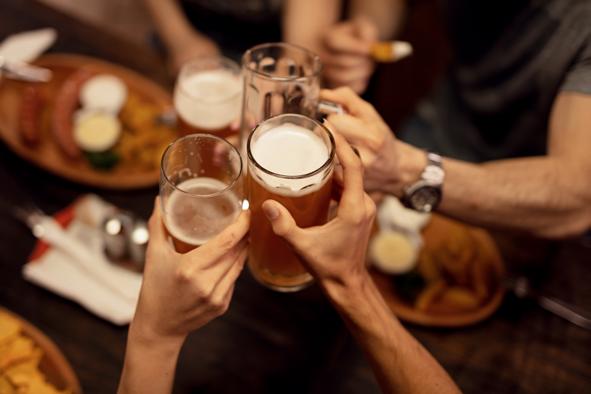
Young Professionals & Newbies
Women's Networking
“When women gather, great things will happen.” Our women’s group is about more than networking – we support, we sympathize, we brainstorm, we collaborate, we laugh… and we have a great time!

Freelancers & Small Business Owners
Join
 Join fellow young (and young at heart) professionals for Happy Hour! Grab a drink, find the AAS tables, and strike up a conversation!
our networking sessions to brainstorm, problemsolve and share challenges, ideas and best practices.
Join fellow young (and young at heart) professionals for Happy Hour! Grab a drink, find the AAS tables, and strike up a conversation!
our networking sessions to brainstorm, problemsolve and share challenges, ideas and best practices.





































































































 By Jaiden Mehta, BSA Troop 10
By Jaiden Mehta, BSA Troop 10








































 By Aisling O’Brien, Director of Development, Singapore American School
By Aisling O’Brien, Director of Development, Singapore American School































 By Melinda Murphy
By Melinda Murphy


































































 Join fellow young (and young at heart) professionals for Happy Hour! Grab a drink, find the AAS tables, and strike up a conversation!
our networking sessions to brainstorm, problemsolve and share challenges, ideas and best practices.
Join fellow young (and young at heart) professionals for Happy Hour! Grab a drink, find the AAS tables, and strike up a conversation!
our networking sessions to brainstorm, problemsolve and share challenges, ideas and best practices.









